Definition of Haiku
Haiku is a Japanese form of poetry that consists of short, unrhymed lines. These lines can take various forms of brief verses. However, the most common structure of haiku features three lines of five, seven, and five syllables, respectively. A haiku poem generally presents a single and concentrated image or emotion. Haiku is considered a fixed poetic form and is associated with brief, suggestive imagery intending to evoke emotion in the reader. Though this poetic form originated in Japan during the thirteenth century, it is also a significant element of English poetry, especially in its influence on the Imagist movement of the early twentieth century.
Because of the haiku form’s brevity as well as fixed verse and syllabic pattern, it leaves little room for anything more than the presentation of a single and focused idea or feeling. Therefore, haiku poems are allusive and suggestive, calling upon the reader to interpret the meaning and significance of the words and phrases presented.
For example, here is a haiku written by Issa, a Japanese poet, and translated by Cid Corman:
only one guy and only one fly trying to make the guest room do
This haiku creates an image of a man and a fly in the same room. The phrase “guest room” is clever in that it implies that both the guy and the fly are welcome temporarily and neither have ownership of the room. This evokes a humorous response and sense of enforced coexistence between man and nature in shared space. Though the poem consists of a single image, presented with simple phrasing, it evokes humor and inspires thought and interpretation for the reader.

Common Examples of Poetic Images in Haiku
Historically, haiku is associated with describing the seasons and their changes. In fact, traditional haiku feature kigo , which is a word or phrase that specifically indicates a particular season. This supports the brevity of the form as well as reference to the time of year. Many poets focus on the natural world and its seasonal changes as subject matter for haiku through the use of nature themes and imagery, which evoke corresponding emotions.
Here are some common examples of poetic images in haiku:
- cherry blossoms
- moon and its phases
- cold (ice, snow , etc.)
- Trees and boughs
- flowers and petals
- insects (butterflies, bees, caterpillars, etc.)
- birds (herons, swallows, etc.)
- forest animals
- water (dew, pond, etc.)
- light (twilight, dawn, candlelight, etc.)
- landscapes (mountains, forests, seas, etc.)
Structure of Haiku
Traditionally, a haiku is a Japanese poem featuring three lines and consisting of simple, yet impactful, words and phrases. This language is structured in a pattern of 5-7-5 moras. Moras are rhythmic sound units that are comparable to syllables. When translating Japanese haiku to English or other languages, the balance between syllable count and meaning of words and phrases is complex. Japanese haiku feature 17 total sounds, or on , which some English translators argue is closer to 12 syllables rather than 17 total. On are not the same as syllables in English and are therefore counted differently, leading to translation discrepancies as to whether 17 English syllables effectively represent haiku.
In addition, Japanese haiku are written in one line, unlike the form with two line breaks that is featured in most English translations. Japanese haiku often feature kireji (a “cutting word”) that creates a pause or break in the rhythm of the poem, rather than a line break . Kireji may be used to juxtapose images.
Overall, the common structure of most haiku poems is:
- first line: 5 syllables
- second line: 7 syllables
- third line: 5 syllables
This 5-7-5 pattern and structure means that a haiku poem, as a rule, consists of three lines and 17 total syllables.
Writing Haiku
It may seem that writing haiku is simple due to the brevity of the form or by meeting the syllable count and pattern. However, this art form requires careful choices in language and the order of words to create effective imagery, evoke an emotional response from the reader, and allow for deeper interpretation and meaning. Here are some elements to keep in mind when writing haiku:
Subject Matter
When determining the subject matter for haiku poetry, it’s important to focus on singular images and smaller details. Nature themes are prevalent in this Japanese art form. Nature makes for interesting and beautiful subjects in terms of seasonal changes and the way our human senses interpret the natural world around us. Haiku poetry is effective in its portrayal and reflection of simple and natural elements of daily life.
Language and Wording
It’s important for poets, when writing haiku, to utilize short phrases that evoke strong images and emotions for the reader. In this case, it’s beneficial to consider the Japanese tradition of kigo . This allows the poet to choose images that symbolize a season and therefore set the mood and tone of the poem with a select few words. For example, a poet can utilize the phrase “tender snowflakes” to represent winter and indicate a cold, perhaps peaceful, setting . This can evoke feelings of calm and quiet for the reader.
In addition to careful use of language and wording to create an effective haiku, it’s important for poets to consider using punctuation or a “cutting word” ( kireji ) for implementing meter and rhythm in the poem.
Examples of Haiku in Literature
Haiku is a style of lyric poetry that usually features intense emotion or a vivid image of nature. This is traditionally designed to lead to spiritual insight for the reader. This type of verse is considered a fixed poetic form, with three unrhymed lines in the pattern of five, seven, and five syllables, respectively. Contemporary poets occasionally vary the syllabic count and/or pattern in haiku.
Here are some examples of haiku in literature and their significance:
Example 1: The Falling Flower (Moritake)
What I thought to be Flowers soaring to their boughs Were bright butterflies.
In this poem, Moritake utilizes the phrase “flowers soaring to their boughs” as kigo , an indication of the spring season when plant life is blooming. In the third line of the poem, the poet establishes that the flowers are actually bright butterflies, reinforcing the warmth and renewal of spring . Additionally, in mistaking the butterflies for flowers and then realizing the actuality, the poet emphasizes the themes of balance, beauty , and relationships in nature. This perception allows the reader to witness this change in imagery and actuality, as the poet does. As a result, this haiku is significant in its representation of the natural world and the way it is interpreted by humans.
Example 2: Lightning in the Sky (Matsuo Basho)
Lightning in the sky! In the deeper dark is heard A night -heron’s cry.
In his poem, Basho appeals to the senses of sight and sound in nature. First, the poet establishes the image of lightning in the sky. Following this lightning, however, is not a clap of thunder as the reader may expect. Instead, the subsequent sound that comes from the dark is the cry of a heron. This juxtaposition of lightning and the bird’s response evokes a feeling of connection between heaven and earth and their natural forces. This haiku is significant in its traditional presentation of nature themes, as well as the spiritual “communication” between heaven and earthly entities.
Example 3: After Basho (Carolyn Kizer)
Tentatively, you slip onstage this evening, pallid, famous moon.
Kizer’s poem is both a haiku on its own and an homage to Matsuo Basho, a seventeenth century Japanese poet who refined the 17-syllable poetic form and established it as an artistic literary expression. As an independent poem, Kizer utilizes the moon as a subject matter which is common in haiku poetry. The moon is personified and “slips onstage” in the evening, just as the moon subtly appears in the night sky. Kizer incorporates this image of nature in a clever manner, as the moon appears to have a spotlight shining on it while “onstage” in the sky.
Kizer’s poem is also significant as a tribute to the poet Basho and a haiku in celebration of the person who enriched this poetic form. With this interpretation, the use of “you” in line one signifies Basho. Kizer implies that his presence and fame remain as the moon does each evening. This brings a spiritual element to the poem through remembrance and reverence in terms of Basho.
Example 4: c’mon man hold me (Sonia Sanchez)
c’mon man hold me touch me before time love me from behind your eyes.
Sanchez’s poem is an example of contemporary haiku and how this poetic form crosses boundaries of time and place. The subject matter of this poem deviates from traditional themes of the natural world. Instead, the subject is human nature and the desire to be loved, physically and emotionally. Beginning the poem with the informal “c’mon” is strategic in that this word consists more of two moras rather than two distinct syllables. This is closer to the traditional Japanese on and use of sound. Most haiku written in the English language are dependent on defined syllables rather than phonetics.
In addition, Sanchez creates a different pattern of meter and rhythm in this poem by using several one-syllable words. Rather than flowing as a somewhat continuous thought, the language in Sanchez’s poem is almost choppy. This increases the pacing and punctuation of the poem while enhancing its sense of pleading and urgency. The poet’s intentions and desires are clear through the use of direct, commanding language. This evokes strong emotion in the reader in terms of identifying with the poet’s desire to be held, touched, and loved on an emotional level (“from behind your eyes”) as well as physical level. This emotional response supports the significance and universality of haiku as a poetic form.
Related posts:
- 15 Examples of Haiku Poems for Kids
Post navigation
- Literary Terms
- Definition & Examples
- When & How to Write a Haiku
I. What is a Haiku?
A haiku is a specific type of Japanese poem which has 17 syllables divided into three lines of 5, 7, and 5 syllables. Haikus or haiku are typically written on the subject of nature. The word haiku (pronounced hahy -koo) is derived from the Japanese word hokku meaning “starting verse.”
II. Examples of Haikus
For examples of haiku, consider these classic poems written by Japanese poets:
From time to time
The clouds give rest
To the moon-beholders.
— Matsuo Basho
Sparrow’s child
out of the way, out of the way!
the stallion’s coming through
— Kobayashi Issa
Over the wintry
forest, winds howl in rage
with no leaves to blow.
— Natsume Soseki
As is clear from these examples, most haikus examine natural themes , such as weather, animals and plants, and changing seasons. Haikus can be serious and meditative, free of mood, or playful and fun.
III. The Importance of Using Haikus
Haikus are important in that they are a highly traditional form of Japanese poetry which has been in existence as early as the 1600s. Haikus later spread to the west in the 1800s. Haiku shows that in as few as three lines and seventeen syllables, interesting observations about nature and life can be made. They show that poetry does not have to be about lofty subjects but can make an animal as small as the grasshopper or a subject as simple as the wind interesting, important, and mentionable.
IV. Examples of Haikus in Literature
Haikus are a popular form in poetry, as anyone can attempt to put together a brief poem of three lines and seventeen syllables. Here are a few examples of haiku in literature:
Mosquito at my ear— does he think I’m deaf?
This haiku was written by the famous Japanese poet Issa.
Old pond… A frog leaps in Water’s sound.
This is considered the most famous Japanese haiku, written by Bashō.
A whale! Down it goes, and more and more up goes its tail!
A playful poem of movement, this haiku was written by Yosa Buson, another famous Japanese poet.
V. Examples of Haikus in Pop Culture
A search on Youtube reveals that haikus have affected pop culture in more ways than one. The short form of haiku can be found in “Youtube Haikus,” or particularly short and typically funny Youtube videos. A similar pop cultural phenomenon has been Vines, or short videos of only six and a half seconds or less! Just as haiku takes advantage of brevity, saying and showing a lot with very little, pop culture prizes brevity in forms of video, Twitter tweets of 140 characters , and memes.

This Youtube Haiku features a strange tongue-flicking goat in a video that lasts only ten seconds.

This is an example of a Vine, lasting only five seconds.
VI. Related Terms: Haikus vs. Similar Poetic Forms
Haiku are not the only form of poetry which utilizes brevity, syllable count, and the subject of nature. Here are a few poetic forms similar to haiku:
A tanka is a thirty-one syllable poem with five lines divided into five, seven, five, seven, and seven syllables. Looking at form, tankas are very similar to haikus, with the first three lines in the same form and two added lines of seven syllables each. Tankas were written as early as the year 600 and were primarily written as songlike letters written to lovers as a gift. Here is an example of a tanka versus a haiku written by the poet Philip Appleman:
In the spring of joy, when even the mud chuckles, my soul runs rabid, snaps at its own bleeding heels, and barks: “What is happiness?”
(after Basho)
Clouds murmur darkly, it is a blinding habit— gazing at the moon.
As can be seen from these examples, tankas and haikus are both Japanese forms which pay close attention to syllable count and lineation. Tankas are simply the longer form.
Interestingly, the lune was a poetic form inspired by the haiku and is called by some the American Haiku. A literature professor named Robert Kelly invented the form, which is a shortened version of the haiku with three lines of five, three, and five syllables. Here is an example of a lune versus a haiku:
If not for the birds I’d not know That I cannot fly . — Lester Smith
Toward those short trees We saw a hawk descending On a day in spring. — Shiki
Although haikus, tankas, and lunes look very similar, the difference lies in form: tankas are longer and lunes are shorter.
VII. In Closing
Haiku is a classic Japanese form of poetry which celebrates nature and little moments in life in a brief three-line seventeen-syllable form. Haikus range from serious reflections and images to lighthearted and uplifting instances.
List of Terms
- Alliteration
- Amplification
- Anachronism
- Anthropomorphism
- Antonomasia
- APA Citation
- Aposiopesis
- Autobiography
- Bildungsroman
- Characterization
- Circumlocution
- Cliffhanger
- Comic Relief
- Connotation
- Deus ex machina
- Deuteragonist
- Doppelganger
- Double Entendre
- Dramatic irony
- Equivocation
- Extended Metaphor
- Figures of Speech
- Flash-forward
- Foreshadowing
- Intertextuality
- Juxtaposition
- Literary Device
- Malapropism
- Onomatopoeia
- Parallelism
- Pathetic Fallacy
- Personification
- Point of View
- Polysyndeton
- Protagonist
- Red Herring
- Rhetorical Device
- Rhetorical Question
- Science Fiction
- Self-Fulfilling Prophecy
- Synesthesia
- Turning Point
- Understatement
- Urban Legend
- Verisimilitude
- Essay Guide
- Cite This Website
What is Haiku? Definition, Usage, and Literary Examples
Haiku definition.
The haiku (hi-COO) is a form of Japanese poetry that originated in the 17th century. The haiku consists of three lines and has a syllabic count of 17.
The word haiku was first used in English in 1902. The meaning is as the same in English as it is in Japanese. Haiku is both singular and plural, meaning you can read one haiku or several haiku.
Elements of the Haiku
The haiku has a set form. Each haiku must consist of exactly three lines, and each line must adhere to a strict syllabic count where the first and third lines contain five syllables and the second line contains seven syllables. It isn’t necessary for these lines to rhyme, though they can.
It’s important to remember that when you read translated haiku, the syllabic count may end up different from the form’s specifications. This is because the number of syllables per word may differ in the translated language vs. in the original.
Content and Style of a Haiku
The haiku form tends to describe nature and natural phenomenon, such as clouds obscuring the moon. It also frequently contains a kigo , a reference to a season, which can be either a word or a phrase.
Haiku also often contain a kireji , or a “cutting word.” This serves the same purpose as a volta in a sonnet ; it cuts across the trajectory of the poem, offering either a shift in perspective or subject matter or a resolution and sense of closure.
Haiku tend to be written with a wistful or contemplative tone and eschew figurative language such as metaphor and simile in favor of an impressionistic or naturalistic description of the world. Additionally, because of their strict line and syllabic count, haiku are known for their sparseness. There are no superfluous or unnecessary words in haiku.
Examples of Haiku in Literature
1. Bashō, “Old Pond”
Perhaps the most famous haiku in the world was written in 1686 by Japanese poet Matsuo Bashō:
An old pond!
A frog jumps in--
the sound of water.
Of course, this poem doesn’t appear to contain the required syllabic measurement because it’s been translated from the original Japanese into English, which have too varied a syllabic count.
2. Sonia Sanchez, 14 haiku
Sanchez wrote a series of linked haiku in honor of Emmett Till, a black child who was murdered in Mississippi in 1955 when a white woman accused him of whistling at her. Sanchez’s poem contains 14 haiku, one for each year of Till’s life. These are the first two haiku:
Your limbs buried
in northern muscle carry
their own heartbeat
Mississippi…
conjugated pain
The astute reader will notice that neither of these opening haiku contain the precise syllabic count required by the form. Sanchez’s first haiku has a syllabic count of four-seven-four, and her second has the syllabic count of four-three-five. Sanchez made an artistic decision to deviate from the strict requirements. This choice shows the brutality and wrongness of Till’s murder and echoes his absence from the world by leaving her poem empty of the expected number of syllables. This modern American haiku also deviates from the traditional haiku subject matter of nature and the natural world.
3. Ron Padgett, “Haiku”
Padgett is an American poet who has written many haiku. Perhaps his best-known haiku is titled “Haiku”:
First: five syllables
Second: seven syllables
Third: five syllables
This clever poem is a kind of meta-haiku. The poem’s form is a haiku and its subject matter is the definition of the form.
Another of Padgett’s haiku, which also shares the title “Haiku,” contains useful advice for life:
First, calm down.
Next, stay that way
for the rest of your life.
While neither of these poems adhere to the traditional subject matter of the haiku by describing the natural world, nor do they contain a kigo (reference to the season) or a kireji (“cutting word”), they do follow the haiku form’s required syllabic count.
Further Resources on Haiku
The Academy of American Poets has a useful brief overview of haiku.
The Academy of American Poets also published this interesting exploration of “ The Haiga: Haiku, Calligraphy, and Painting ,” which explores the history of the haiku and how it has influenced visual art.
The Tofugu website provides a wonderful and comprehensive deep dive into haiku.
Related Terms
Looking to publish? Meet your dream editor, designer and marketer on Reedsy.
Find the perfect editor for your next book
1 million authors trust the professionals on Reedsy. Come meet them.
Guides • Perfecting your Craft
Posted on May 12, 2022
What is a Haiku? Japan’s Beloved Poetry Format, Explained
A haiku is a traditional Japanese poem that captures emotional responses evoked by nature. The most common haiku format is a three-line poem with a 5-7-5 syllable structure and no rhyme requirements.
With its simplicity and concision, haiku poetry has endured the test of time, crossed language and cultural barriers, and is, to this day, one of the most widely read and written types of poem . To better understand this fascinating literary form, let’s look at the haiku’s format, features, and history.
A poetry format containing 17 syllables
The original haiku format is based upon 17 phonetic units, referred to as on (音) in Japanese poetry, which can be roughly compared to syllables. Even though haiku were originally written in a single line, today they are divided into three lines with a 5-7-5 syllable pattern.
Here is one example of a haiku from the form's most famous poet, Matsuo Bashō:
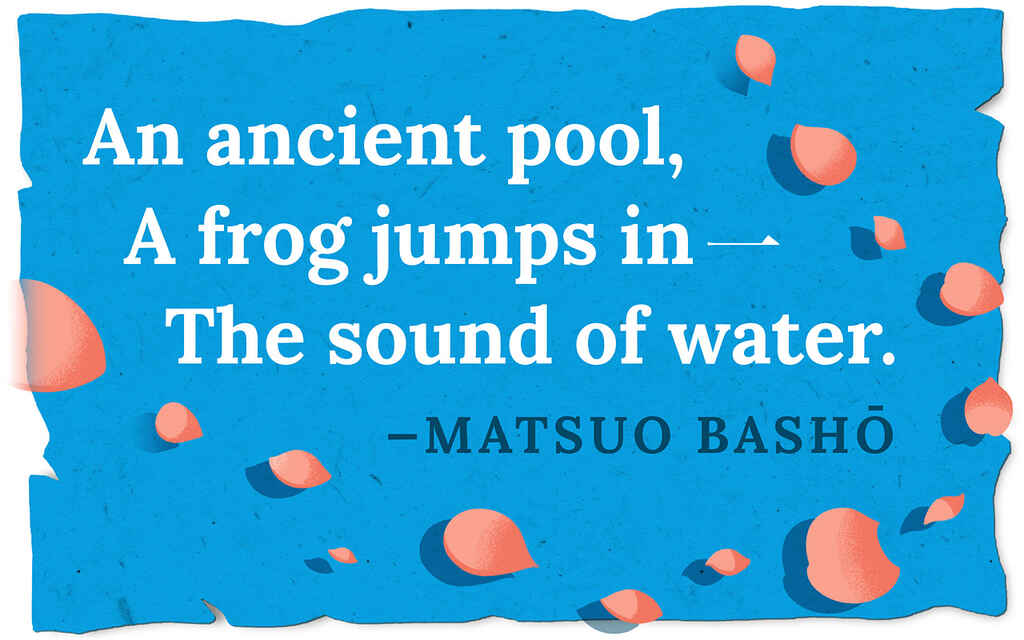
fu-ru i-ke ya (5) ka-wa-zu to-bi-ko-mu (7) mi-zu no o-to (5)
Throughout time, poets worldwide have remained broadly faithful to this structure while also experimenting with new forms inspired by haiku.
What do you capitalize in haiku? Some poets/translators only capitalize names, some only the first word, and others every line’s first letter. There are no set rules for punctuation at the end either — you may or may not use any.
Beyond its format, one of haiku’s core features has always been its conciseness and elegance in describing nature — the main Muse of haiku poets.
Which 20-second poem should you recite while washing your hands?
Discover the perfect poem for you. Takes 30 seconds!
Nature is a common central theme
The natural world has long been central to haiku poetry, inspiring poets to observe their surroundings and notice ordinary yet meaningful moments. Nature was — and still is — considered an ideal setting to invoke wabi-sabi (侘寂), a mental state where one finds contentment with simple things. In nature, you can take pleasure in a bird's song or meditate on the impermanence of life by watching autumn leaves drift downwards.
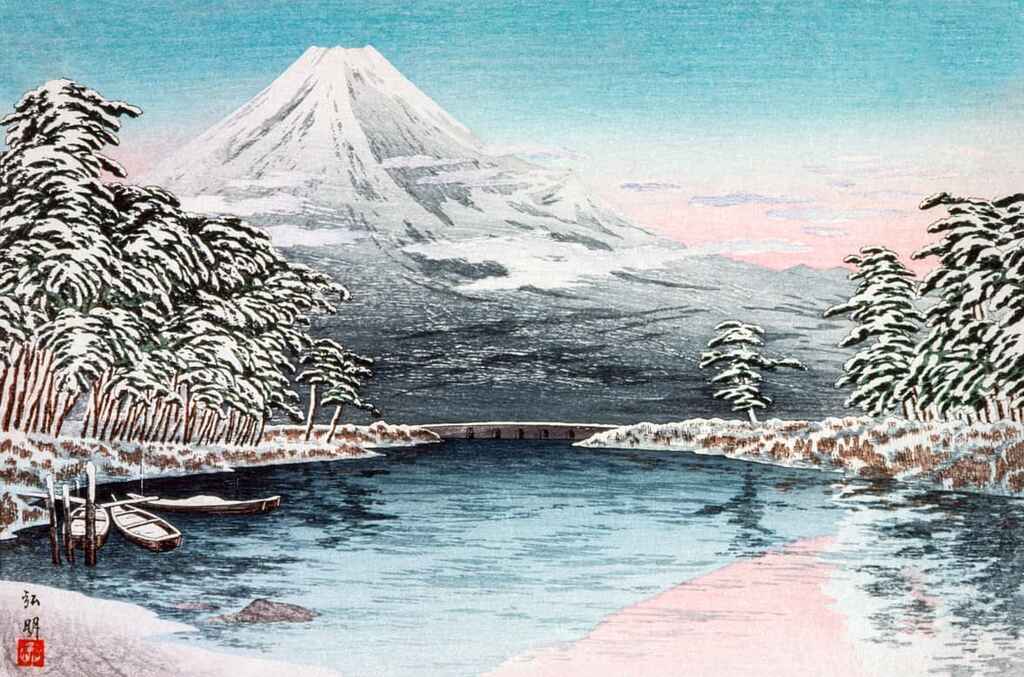
In the Japanese haiku tradition, nature is referenced using ‘season words’ ( kigo , 季語), like spring’s canola flowers or winter’s snowflakes. In the following two examples, cherry blossoms tell us that it's springtime, while cool stars paint a picture of a starry summer night.
cherry blossoms
fall! fall!
enough to fill my belly
一 Kobayashi Issa
The lamp once out
Cool stars enter
The window frame.
一 Natsume Soseki
Over time, various schools of haiku poets have debated whether the form should be solely inspired by nature or open up to other themes. While the jury is still out (after hundreds of years of debate), a reverence for the natural world remains one of haiku’s driving motifs to this day — along with the strong use of imagery.
Combining simple images to express an idea
Many haiku poems aim to express an 'insight': an unexpected emotional response to whatever the poet observes. This insight could be as simple as a laugh, or as deep as a reflection on the fleeting nature of our existence.
Unlikely images united by an emotion
In some haiku poems, one image is sufficient to express a feeling, while in others more images are linked together. Let’s take a look at two examples:
Even in Kyoto,
hearing the cuckoo,
I long for Kyoto.
一 Matsuo Bashō
The image of the cuckoo, and the hearing of its sounds, evokes in the poet a certain nostalgia for a city — and a time — that seems to be gone. The singularity of this image reminds us of how memories work: sometimes it takes just a specific sound to bring you back in time.
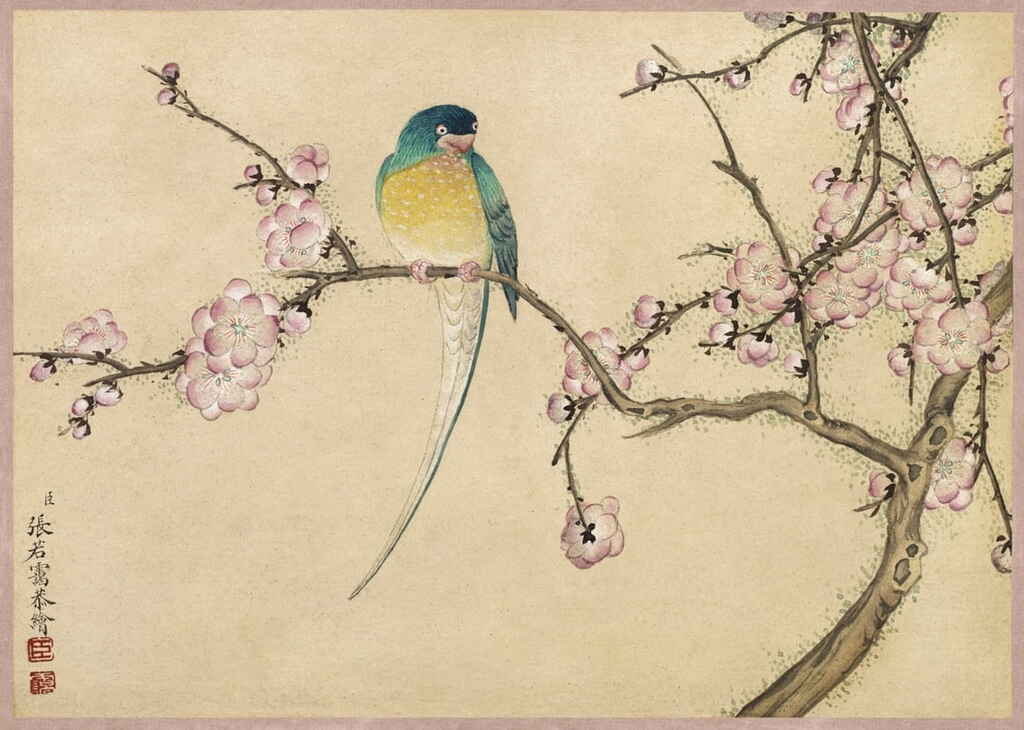
In the following haiku, insects, lovers, and stars are connected to highlight the universal theme of loss and separation.
Don’t weep, insects 一
Lovers, stars themselves,
Juxtaposing images for emotional impact
Sometimes, the insight is expressed by placing two images in contrast with one another. These images are not picked because of their uniqueness or beauty, but rather for what they evoke when linked together.
Let’s see an example:
A caterpillar,
this deep in fall 一
still not a butterfly.
一 Matsuo Bashō
The way Bashō frames the images of a caterpillar and a butterfly in this poem expresses a feeling of unrealized potential or a yearning for growth and evolution that has not yet manifested.
Haiku fact! Traditionally, the juxtaposition of the two images is highlighted by ‘cutting words’ ( kireji , 切れ字) — a poetic construct that can structure a verse in different ways. This break can be punctuation (like a dash) or simply with a word of emphasis (like “Oh!”). By directing the flow of the poem, the kireji helps to break the reader’s thinking patterns and facilitate the association between the images.
The use of natural imagery to convey insights and sudden emotions has been a key component of haiku poetry ever since it gained popularity in 17th-century Japan.
The form dates back to the 17th century
Before haiku, there was renga 一 a form of spontaneous and collaborative poetry from Japan. Renga poems were written in a joint effort by poets, scribes, and masters, starting from an initial stanza ( hokku , 発句) of 5-7-5 phonetic units, followed by a series of 7-7 verses.
As the hokku was considered the catalyst of the entire creative process, poets felt it required a particular level of sensitivity and craftsmanship. In the 17th century, the effort needed to craft a strong hokku led wordsmiths like Matsuo Bashō to approach it as a standalone art form.
Bashō’s time in the wilderness
Despite making a name for himself as a renga poet, Bashō’s restless soul led him to travel around rural Japan 一 something considered to be extremely dangerous at the time. Alone in the wilderness of the countryside, Bashō developed a greater sensitivity to nature and the changing of the seasons 一 trying to encapsulate their essence into a collection of hokku .
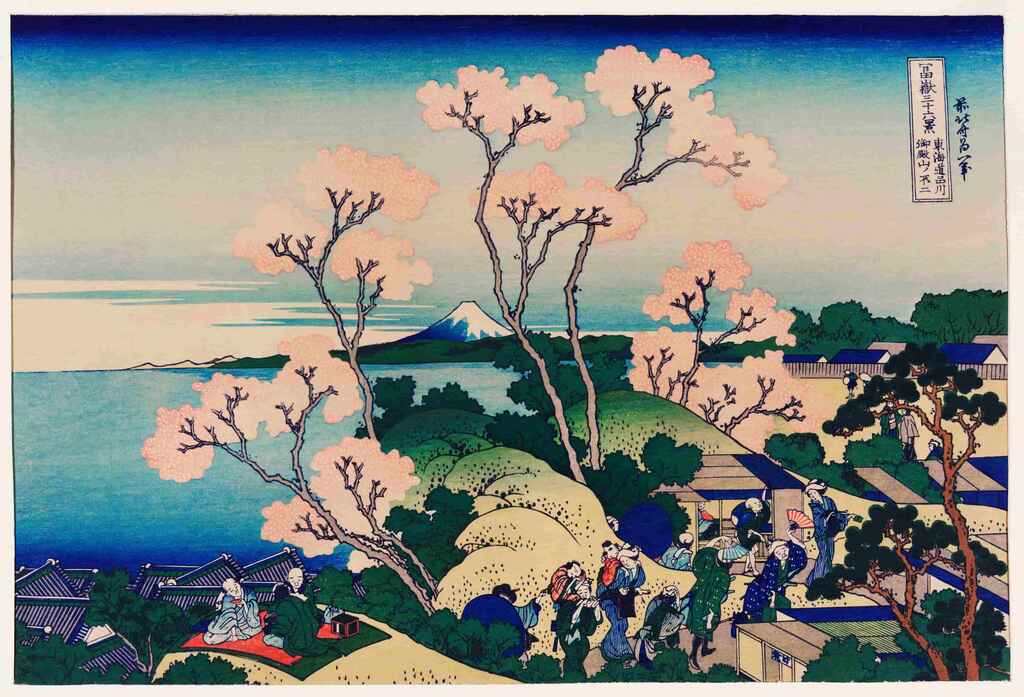
Second-generation haiku poets
Matsuo Bashō was, and still is, one of the most acclaimed haiku masters of all time. His body of work inspired many 一 like Yosa Buson and Kobayashi Issa 一 to follow his tracks and continue the haiku tradition with their own style.
Here are two examples of their work:
A summer river being crossed
how pleasing
with sandals in my hands!
― Yosa Buson
Climb Mount Fuji
But slowly, slowly!
― Kobayashi Issa
In the late 19th century, the poet Masaoka Shiki renamed the hokku as haiku 一 further strengthening it as an independent form of poetry. Like Bashō, Shiki believed that haiku should be “a sketch from nature”, an ever-present theme in the thousands of stanzas he left as his legacy.
green in the field
was pounded into
― Masaoka Shiki
After Shiki, haiku poetry continued to grow in popularity, expanding to discuss modern themes and embracing a more open format.
Modern poets continue to write haiku
In the 20th century, many European and American poets became fascinated with the form and started to write haiku in various languages, including English, French, and Italian. Particularly influential was the Imagist movement (led by T. E. Hulme, Ezra Pound, and Amy Lowell) which tried to “take stills” of their emotional states in just a few words.
Later on, American poets like Nick Virgilio, Richard Wright, and Sonia Sanchez contributed to haiku literature with their own verses. Here are some of their poems:
a blind musician
extending an old tin cup
collects a snowflake
一 Nick Virgilio
I am nobody:
A red sinking autumn sun
Took my name away.
一 Richard Wright
say no words
time is collapsing
in the woods
一 Sonia Sanchez
Some of these poems display traditional haiku features, like the 5-7-5 syllables format, the seasonal references, or the strong use of imagery. Other poems don’t meet these criteria: it’s not uncommon for modern haiku poetry to stray from the traditional guidelines, maybe taking inspiration from the bustling city life as opposed to nature.
However, much of modern haiku poetry still tries to capture, in essence, the many memorable moments and experiences that we are presented with every day.
From the poets of medieval Japan linking verses together, to modern writers sketching lines among skyscrapers in futuristic cities, the story of haiku continues to be written. As long as nature and life remain endless and timeless sources of inspiration, so too shall there be haiku.
Join a community of over 1 million authors
Reedsy is more than just a blog. Become a member today to discover how we can help you publish a beautiful book.

Polish up your verse
Sign up to meet professional poetry editors on Reedsy.

1 million authors trust the professionals on Reedsy. Come meet them.
Enter your email or get started with a social account:

The Haiku: An Introduction
By Dr Oliver Tearle (Loughborough University)
What is haiku? Or what is a haiku? Many of the things we think we know about the Japanese poetic form of the haiku are inaccurate, if not downright incorrect. The common perception, or understanding, of haiku might be summarised as follows: ‘The haiku is a short Japanese poem containing 17 syllables, following a tradition, and a name, that remains unchanged after centuries.’
There are, however, several problems with such a definition of the haiku, which this short introduction aims to address and make clear. So what is a haiku? Let us start with the origins of the term ‘haiku’ itself.
Although the haiku as a verse form is centuries old, the word ‘haiku’ isn’t. Indeed, it was only surprisingly recently – as recently as the end of the nineteenth century, in fact – that people started referring to these miniature Japanese poems as haiku (never ‘haikus’: the plural is the same as the singular), when Masaoka Shiki (1867-1902) began referring to them as haiku as opposed to the older term hokku .
It’s not quite accurate to say that a haiku has 17 syllables, although it’s a rough approximation.
The problem is that the Japanese haiku contains 17 on , and an on is a sound-unit that is slightly different from our understanding of a syllable, since an on is only a short sound, and a longer syllable (like a long diphthong in English, for instance) would count as two on , even though we might count it as a single syllable in English. It’s also not true that a 17-syllable (or 17- on ) poem automatically ‘qualifies’ as a haiku.
Strictly speaking, the haiku should take nature as its theme, or contain imagery drawn from the natural world. A 17-syllable poem about a sandwich toaster, however haiku-like in appearance, is not a bona fide haiku according to the traditional definition of the form.
Instead, it’s an example of Senryu (from the Japanese for ‘river willow’), a related form also comprising 17 ‘syllables’ but not featuring nature or the seasons. For this reason, Senryu are sometimes known as ‘human haiku’.
So, what is a haiku? ‘A haiku is an open door that looks shut.’ That was Reginald H. Blyth’s observation about this, the most minimalist of poetic forms. The haiku may appear small, but it contains multitudes, vastness and expanses of great magnitude. Indeed, this is even, arguably one essential element of the haiku: that it contains reference to the timeless or eternal, the vast and the sublime.
The haiku contains two elements which are usually divided by a break, a pause or a shift which is not unlike the volta or ‘turn’ in the sonnet . This break is marked by a ‘cutting word’ or kireji . The two elements divided by this kireji are usually distinct, although they may be related in some way.
One element will often be general and universal (the oceans, a mountain, the changing seasons), while the other will usually be a more local, personal, and momentary perception (the way the rain lands on the river, for instance). The nature of the elements varies, but there should be the two electric poles between which the spark will leap for the haiku to be effective. Otherwise it is no more than a brief statement.
In 1684, the Japanese poet Ihara Saikaku supposedly wrote 23,500 haiku in a single day, which means that, even if he didn’t sleep for 24 hours, he was churning them out at an average rate of 1,000 an hour – or around one every three-and-a-half seconds.
But the most famous proponent of the haiku, at least to readers in the western world, is probably Basho (1644-94), who wrote (among many others) this haiku:
old pond frog leaps in water’s sound
We have the general or more expansive (‘old pond’) coming into contact with the momentary (the frog leaping into the water); it is the ‘spark’ produced by these two things being placed together, almost like rubbing two stones together to produce a spark of fire, that lends the brief haiku its power. Often in a haiku, the enduring and timeless is overlaid by the transient and temporal.
It was probably this aspect of the haiku that inspired Ezra Pound’s idea of the imagist ‘Image’: ‘ an intellectual and emotional complex in an instant of time ’. Pound’s most famous imagist poem, ‘ In a Station of the Metro ’, is similarly concerned with the fleeting coming into contact with the durable. We might add this short poem by E. E. Cummings too, which seems to have been similarly influenced by the Japanese haiku.
28 thoughts on “The Haiku: An Introduction”
- Pingback: 10 Very Short Modernist Poems Everyone Should Read | Interesting Literature
- Pingback: 10 Classic Autumn Poems Everyone Should Read | Interesting Literature
- Pingback: 10 Very Short American Poems Everyone Should Read | Interesting Literature
- Pingback: 10 of the Best Very Short Poems about Death | Interesting Literature
- Pingback: The Best Ezra Pound Poems Everyone Should Read | Interesting Literature
- Pingback: A Short Analysis of Adelaide Crapsey’s ‘November Night’ | Interesting Literature
- Pingback: A Short Analysis of D. H. Lawrence’s ‘Green’ | Interesting Literature
- Pingback: A Short Analysis of D. H. Lawrence’s ‘Self-Pity’ | Interesting Literature
- Pingback: A Short Analysis of W. B. Yeats’s ‘Lapis Lazuli’ | Interesting Literature
- Pingback: A Short Introduction to the Haiku | collect magazine
Snowflakes softly fall On lovers, who kiss farewell Broken hearts forever
Reblogged this on newauthoronline .
Aww damn. This is going to be bad news for a friend of mine who loves to post “bathtub haiku” to his Facebook wall. I have no idea if he will like “bathtub Senryu” as much ;).
Fascinating post! I learned a great deal. Still not sure I like the form but then I’m not great fan of poetry in general!
Thanks, Ken – I think the haiku, like all short poetic forms, has its limitations but at least (as they said about the sketches in The Fast Show) if you don’t like one, it’s soon over and another will be along in a moment!
Thanks for explaining this so well. I’ve been trying to post good haiku on my blog, sometimes succeeding, sometimes not. 😏
Great account in many ways! Haiku as a term was known in the past, but wasn’t really picked up, until the former journalist Masaoka Shiki (1867 – 1902) picked it up in the 1870s for a new genre that borrowed aspects from hokku verses and the Western art technique of sketching directly from life.
So I’d say haiku is still relatively new in both Japanese, and in other languages, but of course in Japan its origins are in hokku, and before that renku, then renku, waka, and Chinese literature.
To help indicate that Matsuo Bashō (1644–1694) didn’t’ write haiku or write them in English, I penned a small article here: https://the13alphabet.wordpress.com/2018/08/05/why-haiku-is-different/
And yes, I’m aware of a typo or two but I haven’t alerted the blog’s author yet.
warm regards,
Alan Summers co-founder, Call of the Page President, United Haiku and Tanka Society haibun editor, Blithe Spirit, British Haiku Society
Ha! Autocorrect or something… Haiku came about during the 1890s, and renku (revamped renga by Basho) followed renga (the older version). :-)
- Pingback: #Sunday Post – 12th August, 2018 #Brainfluffbookblog | Brainfluff
Reblogged this on Manolis .
- Pingback: A Short Analysis of Tennyson’s ‘Now Sleeps the Crimson Petal, Now the White’ – Interesting Literature
- Pingback: 10 Very Short Modernist Poems Everyone Should Read – Interesting Literature
- Pingback: The Best Ezra Pound Poems Everyone Should Read – Interesting Literature
- Pingback: A Short Analysis of W. B. Yeats’s ‘Lapis Lazuli’ – Interesting Literature
- Pingback: The Best Poems of the 1950s – Interesting Literature
- Pingback: 10 of the Best E. E. Cummings Poems Everyone Should Read – Interesting Literature
- Pingback: 10 of the Best Poems about the Colour Yellow – Interesting Literature
- Pingback: 10 of the Best Poems about Husbands – Interesting Literature
Leave a Reply Cancel reply
Discover more from interesting literature.
Subscribe now to keep reading and get access to the full archive.
Continue reading
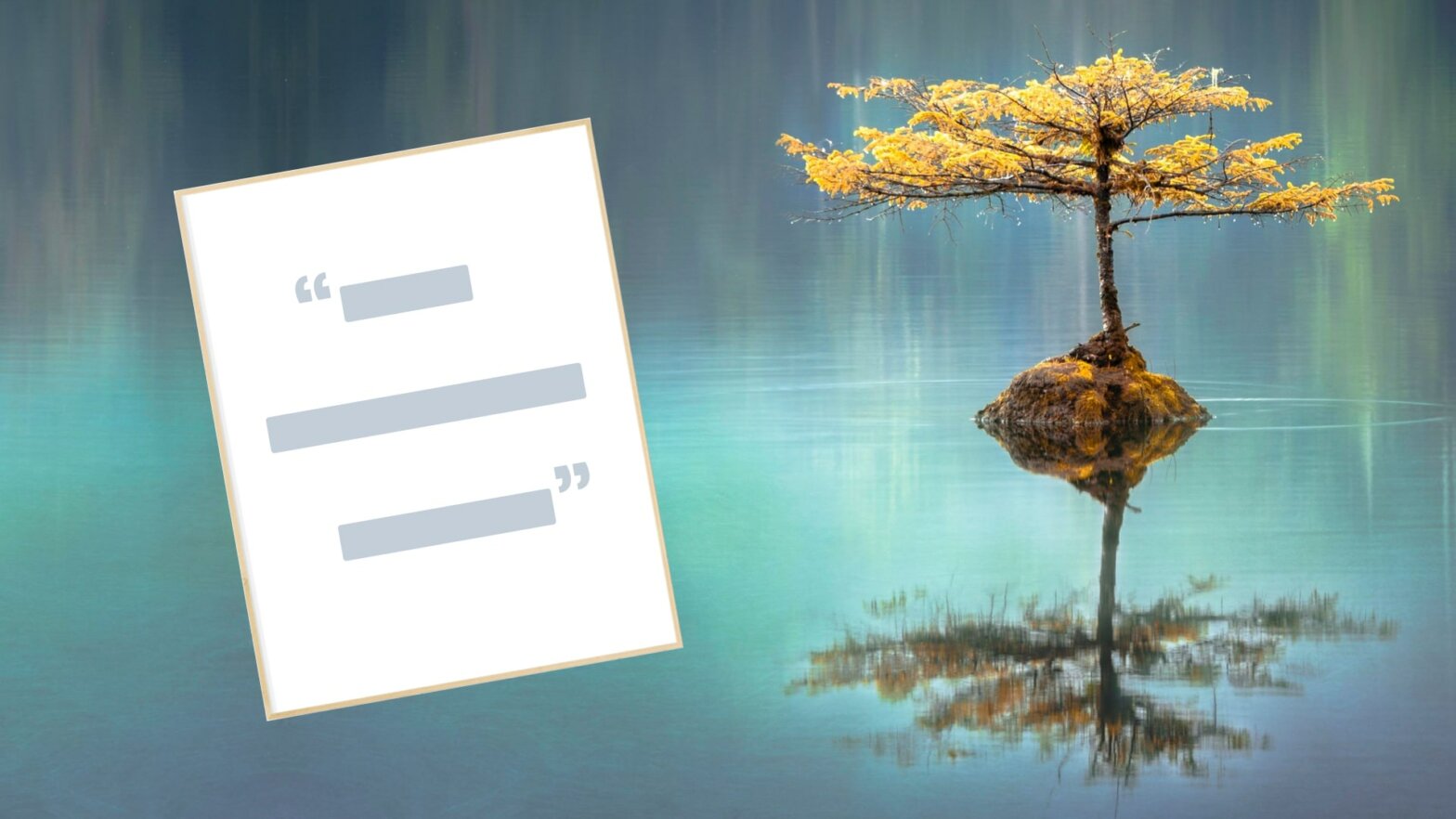
- Scriptwriting
What is a Haiku — Definition, Examples and Structure Explained
- What is a Poem
- What is a Stanza in a Poem
- What is Dissonance
- What is a Sonnet
What is a Haiku
- What is Prose
- What is an Ode
- What is Repetition in Poetry
- How to Write a Poem
- Types of Poems Guide
- What is an Acrostic Poem
- What is an Epic Poem
- What is Lyric Poetry
W hat is a haiku? What distinguishes a haiku from other forms of poetry? We will provide a definition for haiku, explore the history of the form in Japan and around the world, and take a look at some of the most well-known haiku examples. Let’s get started with the definition of a haiku poem.
Definition of a haiku poem
The haiku is a type of short-form poetry that originated in Japan and is now popular all around the world. They are short but when they're done right, they pack a punch. When it comes to haiku in poetry, less is definitely more.
To learn more about all types of poetry, refer to our writer’s guide to poem structures .
HAIKU DEFINITION
What is a haiku.
A haiku is a three-line poem consisting of 17 syllables arranged as a five-syllable line, followed by a seven-syllable line, concluded with another five-syllable line. Haiku’s are language dependent as the number of syllables in each line can change when translated.
In Japanese, rather than syllables, words are broken into “on” which are counted in a different manner. Also, in Japanese, traditional haikus are not separated into three distinct lines but rather presented as one continuous line that is meant to be spoken within a single breath.
Some experts suggest that, in English, a haiku should more accurately consist of between 10 to 14 syllables to best match the sound and rhythm of traditional Japanese haikus.
The three lines of the poem do not rhyme and they typically avoid metaphor, simile, and exposition in favor of imagery and contrast. Traditional examples center around nature and/or the seasons and aim to capture a simple moment in time.
Haiku Structure:
- 5-7-5 syllable structure
- Originated in 17th century Japan
- Language dependent
Haiku Examples
The history of haiku in poetry.
The haiku originated in 17th century Japan, but was preceded by the renga. Going all the way back to 13th century Japan, renga was a type of long-form poetry with a rigid set of rules and conventions.
Renga poems were created in formal settings as a collaboration between multiple poets trading lines back and forth. The first verse of a renga poem was known as a ho kku , which eventually became its own form of poetry that we now refer to as haiku.
In the following video a professor of modern foreign languages explores different forms of Japanese poetry, including renga and haiku.
Renga, haiku, and waka explored • Definition of a haiku poem
As the popularity of the haiku structure grew, more style distinctions were added to the form. Traditional poems must contain a kireji and a kigo. A kireji is a cutting word which is typically used to juxtapose contrasting images and creates a pause in the flow of the poem.
A kigo is a word that grounds the haiku in a particular season without necessarily stating the name of the season. For instance, referring to ume , meaning blossom, to indicate the Spring, or referring to momiji , meaning colored leave, to refer to the Fall.
Some kigo are more abstract than others. A poem that does not adhere to these requirements would not be classified as a traditional haiku and would instead be labeled as a senryū .
The following video delves deeper into kigos.
Guide to kigos in haikus • What is haiku poetry
And this video does the same for kirejis.
Guide to kirejis in haikus • Haiku in poetry
Now that we know all about the history and form, let’s take a look at some haiku examples.
Related Posts
- What is Subtext? →
- How to Write Every Day →
- Creative Writing Prompts →
What is a Haiku Example
Haiku examples.
As we look at these haiku examples, try to identify the kireji and and kigo in each poem. Let’s start with a video that showcases some of the most popular poems read aloud.
Popular Japanese poems read aloud • Define haiku poem
Now, let’s examine a few more examples in written form.
A world of dew,
And within every dewdrop
A world of struggle.
A World of Dew by Kobayashi Issa
In this example, dew serves as the kigo for Spring, and the poem is capped off with the kireji of struggle.
In the twilight rain
these brilliant-hued hibiscus -
A lovely sunset.
By Matsuo Basho
This poem was written by Mastuo Basho who is widely considered the finest haiku writer to ever live. This poem was written in the 1600s when the haiku structure was relatively new. Basho is credited with mastering, refining, and popularizing the form.
Everything I touch
with tenderness, alas,
pricks like a bramble
By Kobayashi Issa
This example is from Koboyashi Issa, another master of the haiku who was active from the 1600s into the early 1700s. Bramble serves as the kigo while pricks serves as the kireji.
- What is Prose →
- What is an Epithet →
- What is a Stanza in a Poem →
Writer’s Guide to Poem Structures
We now know everything there is to know about the origin and nature of haikus and we’ve taken a look at some great examples. Up next, learn about the history and evolution of poetry, the different types and structures of poems, and read examples from each poem style.
Up Next: Guide to Poem Structures →
Showcase your vision with elegant shot lists and storyboards..
Create robust and customizable shot lists. Upload images to make storyboards and slideshows.
Learn More ➜
Leave a comment
Your email address will not be published. Required fields are marked *
- Pricing & Plans
- Product Updates
- Featured On
- StudioBinder Partners
- The Ultimate Guide to Call Sheets (with FREE Call Sheet Template)
- How to Break Down a Script (with FREE Script Breakdown Sheet)
- The Only Shot List Template You Need — with Free Download
- Managing Your Film Budget Cashflow & PO Log (Free Template)
- A Better Film Crew List Template Booking Sheet
- Best Storyboard Softwares (with free Storyboard Templates)
- Movie Magic Scheduling
- Gorilla Software
- Storyboard That
A visual medium requires visual methods. Master the art of visual storytelling with our FREE video series on directing and filmmaking techniques.
We’re in a golden age of TV writing and development. More and more people are flocking to the small screen to find daily entertainment. So how can you break put from the pack and get your idea onto the small screen? We’re here to help.
- Making It: From Pre-Production to Screen
- What is Film Distribution — The Ultimate Guide for Filmmakers
- What is a Fable — Definition, Examples & Characteristics
- Whiplash Script PDF Download — Plot, Characters and Theme
- What Is a Talking Head — Definition and Examples
- What is Blue Comedy — Definitions, Examples and Impact
- 0 Pinterest
Literary Devices
Literary devices, terms, and elements, definition of haiku.
A haiku is a short poetic form from Japan characterized by juxtaposition , seasonal imagery , and number of on , which are similar to syllables. The form has been adopted into other languages with a focus on the number of syllables; in English, haiku is a three-line poem with phrases of five, seven, and five syllables, respectively. However, in traditional Japanese haiku the most important element was the juxtaposition between different images with a transition via a “cutting word” (known as kireji in Japanese). This cutting word can change the stream of thought or provide a comparison between the different lines. It is similar to the concept of the volta in the sonnet form, or the audible pause in classical poetry known as the caesura .
The word haiku comes from hokku , which is the opening verse of an older and longer Japanese poetic form called the renga. Beginning in about the mid-seventeenth century, poets began to create hokku that were independent from longer poetic forms. To differentiate these poetic forms, the poet Masaoka Shiki renamed the standalone hokku a haiku. Thus, while the word comes from the late nineteenth century, the definition of haiku is a few hundred years older.
Common Examples of Haiku
While the haiku form is relatively strict and thus cannot be found in ordinary speech, it has been adopted into popular culture to some extent in many places outside of Japan. Haiku is often a popular form to teach to children because the rules are both strict and easily understandable, while giving good practice about the function of syllables. There are also plenty of haiku writing contests, one of which is an annual sponsored competition from the Haiku Society of America. One comical winning entry was the following:
I hate writing hai- ku because you only get seventeen syllab…
Some advertisers have also adopted short haiku contests to encourage customer participation. This was the case of the American burrito fast-food company Chipotle. In 2015, they asked fans to compose haikus about burritos to win a dinner for two. Here are some of the entries:
- I used to date you But now you just serve me food One taco, no love.
- Electric salsa Glides across beans, rice and meat dancing palate joy.
- Foil wrapped burrito Is it wrong to love you so? I don’t need a man.
Significance of Haiku in Literature
Japanese poets have been creating examples of haiku poetry for hundreds of years. The haiku form got especially popular in the seventeenth century with the rise of the poet Matsuo Bashō, a man who elevated the haiku from a display of wit to a sublime observation on the natural world. He is important enough in Japanese culture to have been declared a saint both by the government and in the Shinto religion. There are several other famous haiku poets, such as Yosa Buson and Kobayashi Issa.
A Dutchman who lived in Japan in the early nineteenth century is the first known westerner to have tried his hand at writing haiku. In the early twentieth century some English speakers began to write haiku examples in English after reading translations of Japanese haiku into English. Many famous poets have written haikus, such as Jack Kerouac, Richard Wright, and Ezra Pound. Not all haikus written in English have exactly seventeen syllables, however. English-language poets recognized that the number of syllables was not the most important nor defining aspect of haiku in Japan. Instead, they tried to approximate and employ other features, such as: a focus on imagery of nature, highlighting a brief moment in time, a sense of enlightenment and revelation, a lack of superfluous words, no rhyme scheme, a lack of simile and metaphor , a lack of much capitalization or punctuation, and a juxtaposition between two things. This juxtaposition could be between something large and something small, some organic and something manmade, etc. The juxtaposition can also be between two things that do not at first seem similar, but are shown to be more similar than expected by way of the haiku.
Examples of Haiku in Literature
An old pond! A frog jumps in— the sound of water.
(By Matsuo Bashō)
This is perhaps the best-known haiku example of all time. It is by the poet Matsuo Bashō, the most revered creator of haiku poetry. This poem excellently and succinctly includes all important elements of a haiku: natural imagery, a juxtaposition between stillness and movement, and the correct number of on . This English translation does not use seventeen syllables in order to parallel the more important aspect of brevity. The image of the frog is one of acknowledged ways of symbolizing spring.
O snail Climb Mount Fuji, But slowly, slowly!
(By Kobayashi Issa)
Kobayashi Issa was another famous haiku poet. This poem has been incorporated into modern culture in a few ways; J.D. Salinger quoted it in his novel Franny and Zoey , while also giving the title to a Russian novel by Arkady and Boris Strugatsy (translated into English as Snail on the Slope ). It is an effective poem by evoking natural imagery and juxtaposing the very small—a snail—with the enormously large—Mount Fuji.
lend me your arms, fast as thunderbolts, for a pillow on my journey.
(By Hendrik Doeff)
Hendrik Doeff lived in Nagasaki, Japan in the early nineteenth century and was intrigued by the haiku form. He wrote several haiku examples in Japanese, trying to adopt the same spirit and tone of the original Japanese poems, as well as stick to the number of on . The above is a translation into English of one of his poems. He creates a nice juxtaposition between the “fast as thunderbolt” arms and their ability to comfort and become a pillow.
The apparition of these faces in the crowd; Petals on a wet, black bough.
(“In a Station of the Metro” by Ezra Pound)
Ezra Pound wrote this haiku example, “In a Station of the Metro,” in 1913. Many consider it to be one of the first successful English-language haiku examples ever written. Pound had originally written this poem in thirty lines, but pared it down to the two lines above. Pound was an Imagist poet, and his economy of language and focus on these very distinct images make him a natural inheritor of the Japanese haiku tradition. He describes a brief moment on the Paris metro with the beautiful juxtaposition between faces on petals. The use of the image of petals and the wet, black bough connote spring in a delicate way.
Snow in my shoe Abandoned Sparrow’s nest
(By Jack Kerouac)
Like many other Beat poets, Jack Kerouac was impressed and inspired by R. H. Blyth’s English translations of Japanese haikus. He does an excellent job of providing evocative imagery that raises questions and forces the reader to work a bit harder to understand his meaning.
A stone at its core, this snowball’s the porcelain knob on winter’s door.
(By Paul Muldoon)
Contemporary Irish poet Paul Muldoon wrote many dozens of examples of haiku. He chose to stick to the strict 5-7-5 syllable count in English, and employed seasonal imagery. Muldoon also provides an interesting juxtaposition between the snowball and a doorknob.
Test Your Knowledge of Haiku
1. Which of the following statements is the best haiku definition? A. A short poetic form originally from Japan that focuses on natural imagery and juxtaposition. B. A long Japanese form that has lost all popularity and is now very obscure. C. A poetic form that has been stolen and ruined by English speakers.
2. Which of the following elements can usually be found in examples of haiku poetry? A. Strict capitalization and punctuation. B. Conjunctions and a tendency toward wordiness. C. Juxtaposition and “cutting words.”
3. Which of the following poems by Paul Muldoon qualifies as an example of haiku? A.
I gave you back my claim on the mining town and the rich vein we once worked, the tumble down from a sluice box that irked you so much, the narrow gauge that opened up to one and all when it ran out at the landing stage beyond the falls.
The birch crooks her arm, as if somewhat more inclined to welcome the swarm.
Where every town was a tidy town and every garden a hanging garden. A half could be had for half a crown. Every major artery would harden
- National Poetry Month
- Materials for Teachers
- Literary Seminars
- American Poets Magazine
Main navigation
- Academy of American Poets

User account menu

Explore the glossary of poetic terms.
Page submenu block
- literary seminars
- materials for teachers
- poetry near you
A traditional Japanese haiku is a three-line poem with seventeen syllables, written in a 5/7/5 syllable count. Often focusing on images from nature, haiku emphasizes simplicity, intensity, and directness of expression.
Discover more poetic terms.
History of the Haiku Form
Haiku began in thirteenth-century Japan as the opening phrase of renga , an oral poem, generally a hundred stanzas long, which was also composed syllabically. The much shorter haiku broke away from renga in the sixteenth century and was mastered a century later by Matsuo Basho , who wrote this classic haiku:
An old pond! A frog jumps in— the sound of water.
As the form has evolved, many of its regular traits—including its famous syllabic pattern—have been routinely broken. However, the philosophy of haiku has been preserved: the focus on a brief moment in time; a use of provocative, colorful images; an ability to be read in one breath; and a sense of sudden enlightenment.
This philosophy influenced the American poet Ezra Pound , who noted the power of haiku’s brevity and juxtaposed images. He wrote, “The image itself is speech. The image is the word beyond formulated language.” The influence of haiku on Pound is most evident in his poem “ In a Station of the Metro ,” which began as a thirty-line poem, but was eventually pared down to two:
The apparition of these faces in the crowd; Petals on a wet, black bough.
Other examples of haiku include “ The light of a candle ” by Yosa Buson ; “ Haiku Ambulance ” by Richard Brautigan ; and “ 5 & 7 & 5 ” by Anselm Hollo . Also read the essay “ The Haiga: Haiku, Calligraphy, and Painting ” to learn more about the history of haiku and how it has impacted visual art.
Featured Poets
The following poets, as well as many others, are known for their work in the haiku form.
Yosa Buson : A Japanese poet of the Edo period and born in 1716, Yosa Buson was known, along with Matsuo Basho and Kobayashi Issa, as one of the three classical masters of haiku.
Sadakichi Hartmann : Sadakichi Hartmann, who was born in Nagasaki, Japan, in 1867, published numerous books of poetry and fiction, including Tanka and Haiku: 14 Japanese Rhythms in 1915.
Sanki Saitō : Born in Tsuyama, Japan, in 1900, Saitō began writing haiku while practicing dentistry and went on to serve as the chief editor of Haiku in Tokyo.
W. S. Merwin : A celebrated poet known also for his work in translation, W. S. Merwin, born in 1927, published a translation of the Collected Haiku of Yosa Buson in 2013.
Sonia Sanchez : Born in 1934 in Alabama, Sonia Sanchez, who received the 2018 Wallace Stevens Award, published more than a dozen books of poetry, including Morning Haiku in 2010.
Robert Hass : Robert Hass, born in 1941, is known both for his poetry and his translations, which include the 1994 The Essential Haiku: Versions of Basho, Buson, and Issa.
Read more haiku .
“Submit to nature, return to nature,” wrote the seventeenth-century Japanese poet Matsuo Basho, thus capturing the beauty and simplicity of the haiku—a seventeen-syllable poem traditionally depicting a fleeting moment of a given season. The same can be said of the haiku’s more visual cousin, the haiga, which unites a haiku poem, written in calligraphy, with a simple painting.
— “The Haiga: Haiku, Calligraphy, and Painting”
Haibun combines a prose poem with a haiku. The haiku usually ends the poem as a sort of whispery and insightful postscript to the prose of the beginning of the poem. Another way of looking at the form is thinking of haibun as highly focused testimony or recollection of a journey composed of a prose poem and ending with a meaningful murmur of sorts: a haiku.
—Aimee Nezhukumatathil in “More than the Birds, Bees, and Trees: A Closer Look at Writing Haibun”
More Related Poetic Forms
Epigram : An epigram is a short, pithy saying, usually in verse, often with a quick, satirical twist at the end.
Fragment : A fragment is a part of a larger work, or a poem made to appear discontinuous or incomplete.
Renga : A renga is a form consisting of alternating tercets and couplets written by multiple collaborating poets.
Riddle : A riddle is a short poetic form with roots in the oral tradition that poses a question or metaphor.
Tanka : A tanka is a thirty-one-syllable poem, Japanese in origin, that is traditionally written in a single unbroken line but is better known in its five-line form.
Poetry as a Creative Practice to Enhance Engagement and Learning in Conservation Science : This essay explores the possible intersections between science and poetry—particularly the haiku form—in the classroom.
How I Teach Poetry in the Schools : Jack Collom suggests teaching a simplified version of the formal haiku known as a lune to help engage younger students.
Writing Prompt
Choose a moment in daily life through which you recently interacted with nature in a surprising way, either literally, or through the imagination—as is the case in Pound's poem " In a Station of the Metro ." Write a haiku that conveys the moment through images, striving to be true to the traditional rules of the form, especially the compressed, three-line structure. Select your images carefully, paying close attention to what is offered through the proximity of the images, rather than only through the images themselves.
Newsletter Sign Up
- Academy of American Poets Newsletter
- Academy of American Poets Educator Newsletter
- Teach This Poem

What is haiku poetry: format, rules and history
Table of Contents
Format, rule, seasonal words, and famous poets of haiku poetry
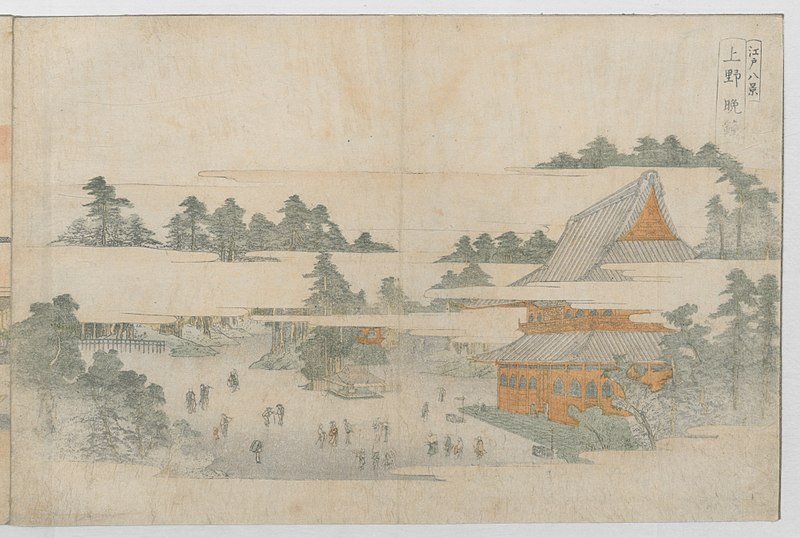
The rules of haiku is so simple. But do you know how to write haiku poems is different between Japanese and English?
What is a “haiku”? The structure in Japanese and in English.
The format of Japanese
- 5-7-5 syllables ( 17 syllables in all)
- Must use a seasonally word(phrase), “ kigo “(read below)
The strucure of haiku is basically 5-7-5, 15 syllables. It is a poem that place value on the rhythm of sound, so it is better to keep 5-7-5 as possible. It is like a samba rhythm for Brazilians. The Japanese settle down somehow by listening to this syllable.
However, as an exception, there are also haiku such as an extra syllable “ziamari” or conversely less “zitarazu”.
In addition, Taneda Santoka(1882-1940) is a poet who dared to begin haiku poems free from 5-7-5 structure.
Related Post
Differences between Haiku and Tanka poetry
The format of English
- Three lines and a preferably 5-7-5 syllables
- Kigo is unnecessary. It’s okay to have just sense of season
- Using a mark of dash(-) or colon(,) as “kireji”(read below)
- A theme is not a thought or concept but a matter
- Avoiding a description and prose
What does haiku mean?
The haiku’s history started from “haikai”(俳諧) which focused on funny themes. Haikai and “renga”(連歌, more elegan than haikai) started with “hokku”(発句), 5,7,5 syllables and next person consider another 7,7 syllables like fit to hokku, then the third person thinks 5,7,5 syllables for following.
So haiku originally meant a hokku(start) of haikai and the words joined.
First person(hokku): 5,7,5
Second person:7,7
Third person:5,7,5
Forth person:7,7
Comparing to haikai, people enjoyed sensibility and feelings in renga. Renga and haiku were played by two or more performers unlike tanka, 5-7-5-7-7 or 7-7-5-7-5 syllables by a single person. Hokku literally means starting phrase and is a part of kaminoku(the first part of a poem) in tanka.
Then, people in Edo Period made hokku independent and that is the style of haiku, 5-7-5 syllables.
Format of tanka poetry
t is said that 5-7-5 or 5-7-5-7-7 syllables are the most suitable rhythms for Japanese. And the other reason that English haiku doesn’t have 5-7-5 syllables, is the issue of languages. English syllable may have one vowel with some consonants. But Japanese syllable doesn’t have plural consonant. So it’s difficult to apply Japanese to English.
Seasonally word:kigo
Types of kigo widely cover the range of plants and animals, time of year, events, astronomy, life.
Also about kigo, the weather of Japan has clear four seasons and each kigo stir imagination of Japanese who live there. The countries have their own condition of the climate and the culture. It is impossible to compel kigo to others.
spring moon, spring dark, spring rain, spring river, spring sky, warm, tranquil, be perfectly clear, thin ice, laughing mountain, soap bubble, turban shell, the first day of spring, the vernal equinox, cherry-blossom viewing, the Dall’s Festival, swallow, silkworm, kitten, ume (plum blossoms), cherry blossoms, Japanese butterbur scape…
hot, cool, summer rain, summer sky, summer mountain, summer Fuji, ice cream, iced coffee, iced tea, rice‐planting, early summer rain, rainy season, early summer, morning cloud, firefly, cicada, cicada born, catfish, Mother’s Day, Father’s Day, the summer solstice, carnation, young leaves, crape myrtlean, green chili…
fresh, chilly, autumn pond, autumn river, autumn rain, autumn day, autumn mountain, dewdrop, moon, the Milky Way, crescent, midnight moon, fireflower, the lingering summer heat, locust, bell cricket, good harvest, bad harvest, rice harvesting, autumn leaves, the autumnal equinox, autumn eggplant, gentian, orchid…
winter water, winter sea, winter field, oden, yakitori, fire, stove, catch a cold, north wind, sleeping mountain, snow, Orionthe Hunter, jacket, coat, globefish, yellowtail, rabitt, fox, mandarin orange, carrot, daikon(Japanese white radish)…
Pause:kire(切れ), kugire(区切れ)
Japanese haiku has two types of the pause in its short 17 syllables. When you want to emphasize the touched feeling and use a technique of “kire”. Using “kireji”(切れ字) including, ya, kana, and keri, you can express your delight or sadness strongly in same way of exclamation mark. It also has an effect of omitting the words and leaving the readers with an allusive feeling.
On the other side, “kugire” is a break of meaning in a haiku poem. There are four kinds of the pause, first line break(shoku-gire 初句切れ), second line break(niku-gire 二句切れ), no break(kugire-nashi 句切れなし), and mid-flow break(chukan-gire 中間切れ).
Examples of haiku poems
Matsuo basho.
- 10 Famous haiku poems of Matsuo Basho
Four seasons haiku
- Haiku poems of spring. The examples by Matsuo Basho
- Haiku poems of summer. The examples by Matsuo Basho
- Haiku poems of autumn. The examples by Matsuo Basho
- Haiku poems of winter. The examples by Matsuo Basho
Famous Poets
- Kobayashi Issa
- Masaoka Shiki
- Takahama Kyoshi
- Kawahigashi Hekigoto
- Japanese traditional haiku poems about nature
- 10 Haiku love poems
- Haiku poems about death and rip
- Haiku poems about Christmas
- The examples of haiku poems about flowers
- The spring haiku poem examples by Japanese famous poets
- The summer haiku poem examples by Japanese famous poets
- The autumn haiku poem examples by Japanese famous poets
- The winter haiku poem examples by Japanese famous poets
There were three famous poet of haiku in Edo Period, Matsuo Basho(松尾芭蕉), Yosa Buson(与謝蕪村), and Kobayashi Issa(小林一茶)
<English>
Even in profusion
I prefer the first cherry blossoms
Rather than peach
<Japanese>
咲き乱す 桃の花より 初桜
Sakimidasu/ Momo no hanayori/Hatsuzakura
The mayfly land
On the paper jacket
Of my shoulder
かげろうの わが肩に立つ 紙子かな
Kagerou no/ Waga kata ni tatsu/ Kamiko kana
Yosa Buson <English>
Spring ocean
Swaying gently
All day long.
Translated by Miura Diane and Miura Seiichiro
春の海 ひねもすのたり のたりかな
Haruno-umi Hinemosu-Notari Notarikana
Kobayashi Issa <English>
“Gimme that harvest moon!”
Cries the crying
Translated by David G. Lanoue
名月を 取ってくれろと 泣く子哉
Meigetsu-wo Tottekurero-to Nakuko-kana
Related posts:
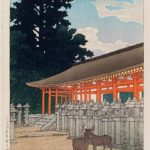
What is a Haiku? Definition, Examples of Literary Haikus
A haiku is a style of Japanese poetry that contains 17 syllables total divided into lines of 5 syllables, then 7 syllables, and 5 syllables again. Haikus tend to be written about nature or subjects relating to nature.
What is a Haiku?
Haikus are poems that have three lines with the first line containing 5 syllables, the second containing 7, and the last containing 5 syllables for a total of 17 syllables in the entire poem. In traditional Japanese haikus, moras stand in for syllables but since there is no exact English translation, we use syllables in English language haikus. Moras are like syllables in the Japanese language and represent a sound unit.
Haikus rarely use rhyming, relying instead of the cadence created from the 5-7-5 syllable structure to add lyrical quality to the poems. Haikus are full of imagery, metaphors, and personification and are usually about nature and seasons. Haikus traditionally have two juxtaposed subjects that are divided into two parts and in English, this is usually shown with a dash.
For example, “Autumn Moonlight” by Matsuo Banshō :
Autumn moonlight—
a worm digs silently
into the chestnut.
Modern Examples of Haiku
In contemporary Americanized haikus, the 5-7-5 syllable style is often rejected in favor of other very brief structures. The most important aspects in contemporary haikus are that they uphold a moment in time and lead to a moment of illumination, following what is believed to be the most profound elements of the traditional Japanese poems.
For example, this untitled haiku from American poet Alan Pizzarelli :
just before dawn
a beachball floats
across the stillness of the pool
Jack Kerouac’s Book of Haikus contains many Americanized and modern examples of haikus including:
Snow in my shoe—
Sparrow’s nest
American poet John Sandbach wrote this untitled haiku as well:
losing its name
enters the sea
The Significance of Haikus
At this point in the development of haikus, considering their cross-cultural influence in contemporary times, they are not strictly on topics about nature but rather aim to be on topics with which readers can easily identify. This brings readers closer to the author and closer with one another. In the same line of thought, haikus are easy to identify with and are easily accessible for just about any reader. Haikus show people that poetry does not have to be about complex abstract ideas, with long and complex form. Instead, haiku invites all people to appreciate poetry.
Sometimes, haikus can be useful tools for comparison. This happens when poets use haiku to juxtapose two ideas against each other. This creates an internal comparison that invites the reader to think beyond the words on the page.
Examples of Haiku in Literature
The American poet Nick Virgilio is widely credited as having been instrumental for bringing the popularity of haiku to American poetry. Many of his haikus are mystical and uphold the Japanese tradition of being about nature. Consider the following example:
out of the water…
out of itself
Picking bugs
off the moon
More traditionally, consider the following Japanese haiku poets:
Sparrow’s child out of the way, out of the way! the stallion’s coming through
-Kobayashi Issa
Over the wintry forest, winds howl in rage with no leaves to blow.
-Natsume Sosek
I kill an ant and realize my three children have been watching.
-Kato Shuso
Haiku is a style of poetry originating in Japan in which short poems about nature follow a syllabic structure of 5-7-5. Although modern haiku has deviated some from the traditional haiku syllable count, haikus continue to uphold themes such as nature, moments in time, and juxtaposed subjects.

What is a Haiku? Definition, Examples of Haiku
Home » The Writer’s Dictionary » What is a Haiku? Definition, Examples of Haiku
Definition of haiku: A haiku is a type of poem that consists of three unrhymed lines of five, seven, and five syllables, with a total of seventeen syllables in all.
What is a Haiku Poem?
What does haiku mean? Haikus are a verse form originating from Japan. Traditionally, haikus evoked images of the natural world, relating to seasons and nature.
What’s the pattern of a haiku? Traditional haikus consist of three unrhymed lines and seventeen syllables. The first line has five syllables, the second seven, and the final line five. This format is varied slightly when people write haikus.
Modern Examples of Haikus

Matsuo Basho writes a traditional haiku using images of nature and the environment:
An old silent pond… A frog jumps into the pond, splash! Silence again.
This is a traditional haiku that follows the 5-7-5 structure.
Next, we have an example of a more modern haiku, written by Alan Pizzarelli who comments about humans and their interactions with nature:
driving out of the car wash clouds move across the hood
This haiku does not follow the traditional 5-7-5 layout. The Academy of American Poets recognizes that not all haikus must follow the traditional structure, but they must maintain the essential principals of haikus: namely, encapsulate a single impression or moment in time, provide colorful, vivid imagery, lead to a moment of illumination.
The Importance of Haikus

Try using this form of poetry when you are writing in verse to capture a single emotion or image to convey a strong message. When writing in this form, it’s not only important to follow the haiku structure; it’s also important to write the poem with a sudden awareness in the present tense, i.e., a sudden moment of illumination.
While haikus are short in length, they do not lack in meaning or impact.
Haiku Examples in Literature

Here are some examples of haikus:
Kato Shuso writes in regards to the importance of all living beings:
I kill an ant and realize my three children have been watching.
In Matsuo Basho’s haiku, he writes to convey his sudden awareness of the natural surroundings:
In the twilight rain these brilliant-hued hibiscus – A lovely sunset
Summary: What are Haikus?
Define haiku: To review, haikus are structured poems. These poems are unrhymed and consist of three lines with a total of seventeen syllables. The lines follow the pattern of five, seven, and then five syllables.
Haikus take place in present tense and reveal an image of sudden awareness that often connects humans to their natural surroundings.
Final example,
In Murakami Kijo’s haiku he shows his sudden awareness of his connection to his father which occurs as the seasons change:
First autumn morning the mirror I stare into shows my father’s face.

What is Haiku?

Haiku - Japanese and English-language Equivalents
Haiku is an ancient form of Japanese poetry often containing (in English) a total of 17 syllables shared between three lines that are arranged in a pattern of 5-7-5. The fist line consists of 5 syllables, the second line 7, and the last line contains another 5 syllables.
It is important to note that the original Japanese haiku was measured in sounds, or "breaths," not English syllables. The 5-7-5 approach was a rough approximation. Many traditional Japanese and English-language literay haiku are much shorter than the 5-7-5 format of the West. That said, poetry is art and 5-7-5 is still very popular today. Some Japanese poets still embrace that framework.
Still, Haiku Poetry is Far More Complex
For many young students, haiku begins and ends with 5-7-5. My then 9-year-old nephew came home from school one day anxious to share his first haiku:
Very athletic. They go ooh ooh ooh aah aah. They like climbing trees.
Delighted that he has been introduced to the world of haiku and impressed with the flexible use of "oohs" and "aahs" to meet a syllable count, I didn't have to the heart to tell him that his monkey-inspired poem isn't technically a haiku.
So what is missing?
Some Characteristics of Haiku
- An English-language haiku sometimes contains of 17 total syllables
- English-language format is sometimes composed of 3 lines of 5-7-5 (syllables)
- 2 simple subjects are often placed in juxtaposition
- These 2 subjects are often separated by punctuation
- A keen or unusual observation is made by comparing the two subjects
- Haiku often contains a seasonal reference
- Poems are traditionally about nature or the natural world
It's a lot more complicated than we thought, right? Traditional haiku usually focuses on two very simple subjects while providing an interesting or unexpected perspective. Like a good joke, the first part can serve as the set-up, while the second part delivers the punchline.
Here is a classic example of haiku poetry from master Murakami Kijo (1865 - 1938):
First autumn morning: the mirror I stare into shows my father's face.
That's a poem that has everything:
- Two simple subjects
- Separated by puntuation
- It contains a seasonal reference (autumn) that also has double-meaning
- And it provides an interesting and unexpected perspective
Shifts in Modern Haiku
Some modern poets reject the entire notion of 5-7-5, prefering the shorter breaths of the Japanese originals (a haiku should be able to be said in one breath.) Many also choose to omit the seasonal reference. Photography has also joined the ranks of some modern haiku, updating traditional haiga (haiku brush painting)
Haiku is Accessible... but Can Take a Lifetime to Master
Whether embracing 5-7-5 or working in modern haiku, haiku is an amazing art form. While a child can understand the very basics of format and structure, truly mastering haiku can take a lifetime. Come as you are, get comfortable and join us as we continue to work on our craft together!
Make sure you don't miss a thing. We won't sell or share your email.
Other Resources
Coming soon.

Featured Haiku
- The wren Earns his living Noiselessly. - Issa
Recent Tweets
- Mourning Doves // puffed up twice their size. // Dream of warmer days. #Haiku
- My heart finds solace // amongst your lovely verses. // The finest couplet.
- Classic haiku from Yoso Buson (1716 - 1783): A heavy cart rumbles by and the peonies quiver. #haiku

What Is a Haiku? – The Art of Writing Japanese Haiku Poetry
Haiku is a well-known and ancient form of poetry that found its origin in Japan. Most poetry has words in lines that rhyme, but haiku does not rhyme and may not sound anything like an ordinary poem. When properly studied and understood, haiku poetry can give the reader a brief account of Japanese culture. To better understand this form of poetry and to try writing it yourself, let us now share with you more of this amazing art culture and its history in our article below.
Table of Contents
- 1 What Is a Haiku Poem?
- 2 The History of Haiku
- 3.1 Examples of Haiku
- 4.1 What Are the Rules for Haiku?
- 4.2 Consider Nature
- 4.3 Write It Down
- 4.4 Drafting Your Haiku Poem
- 5.1 What Is a Haiku Poem?
- 5.2 What Verse Form Is Used in Haiku?
- 5.3 Can You Use Punctuation Marks When Writing Haiku?
What Is a Haiku Poem?
The word “haiku” is derived from Japanese and means starting verse . Japanese haiku is a Japanese poem that was originally written in one line, but today it is a Japanese poem in three lines, containing five, seven, and five syllables each, making a total of 17 syllables.
What is a haiku? Haiku is well known for its ability to paint a graphic and dramatic picture by only using a few words, which forces poets or writers to cut down on any unnecessary words, making each syllable and word count. United States scholars are taught haiku in grade school, and most students enjoy writing haiku because of its briefness.
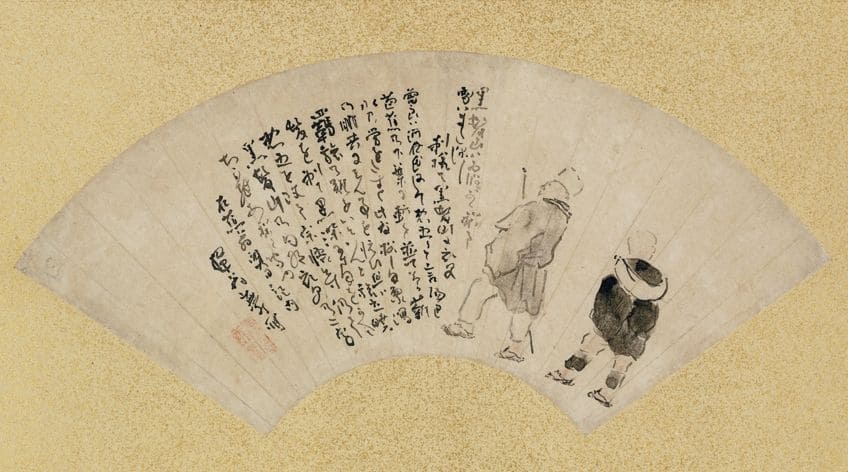
Haiku poetry focuses mainly on nature, emphasizing its intensity, and simplicity. The poem is usually concise, stating each point clearly, which is the main aim of all haiku poets. Most English haiku poems include a range of topics. Although haiku poetry may sound or look simple, it entails more than trying to keep within the syllable count.
The History of Haiku
Haiku has a very long history that originated in Japan, traditionally, only a few poets were found in Japan, and they have become respected and renowned over the years for their haiku poetry. Some of the main contributors to haiku poetry are Buson, Basho, Shiki, and Issa, but Basho is regarded as the most famous haiku poet.
The very first form of Japanese poetry was called “Renga” and was popular in the 13th as well as 14th centuries. This was a longer poem combining more than one poet and consisting of lines that are written back and forth.
The poem was controlled by a complex set of rules and was often written with three short phrases that contained five, seven, and five syllables like the modern-day haiku.
During the Edo period (1644 to 1867), a Japanese reformist poet known as Matsuo Basho (1644 to 1694) promoted a more humorous and relaxing form of Renga, which he called “Haikai”. With this new form of Japanese poetry, the poets could now experience a greater ability to express themselves with many variations in tone.
Japanese poets like Yosa Buson (1716 to 1784) and Kobayashi Issa (1763 to 1828) were able to describe mere mundane objects with a great sense of humor. During the Meiji period (1868 to 1912), Japanese poets like Masaoka Shiki (1867 to 1902), developed “hokku” poetry, making it more popular. Then in the 19th century, hokku became known as haiku and is today a fully independent style of poetry.
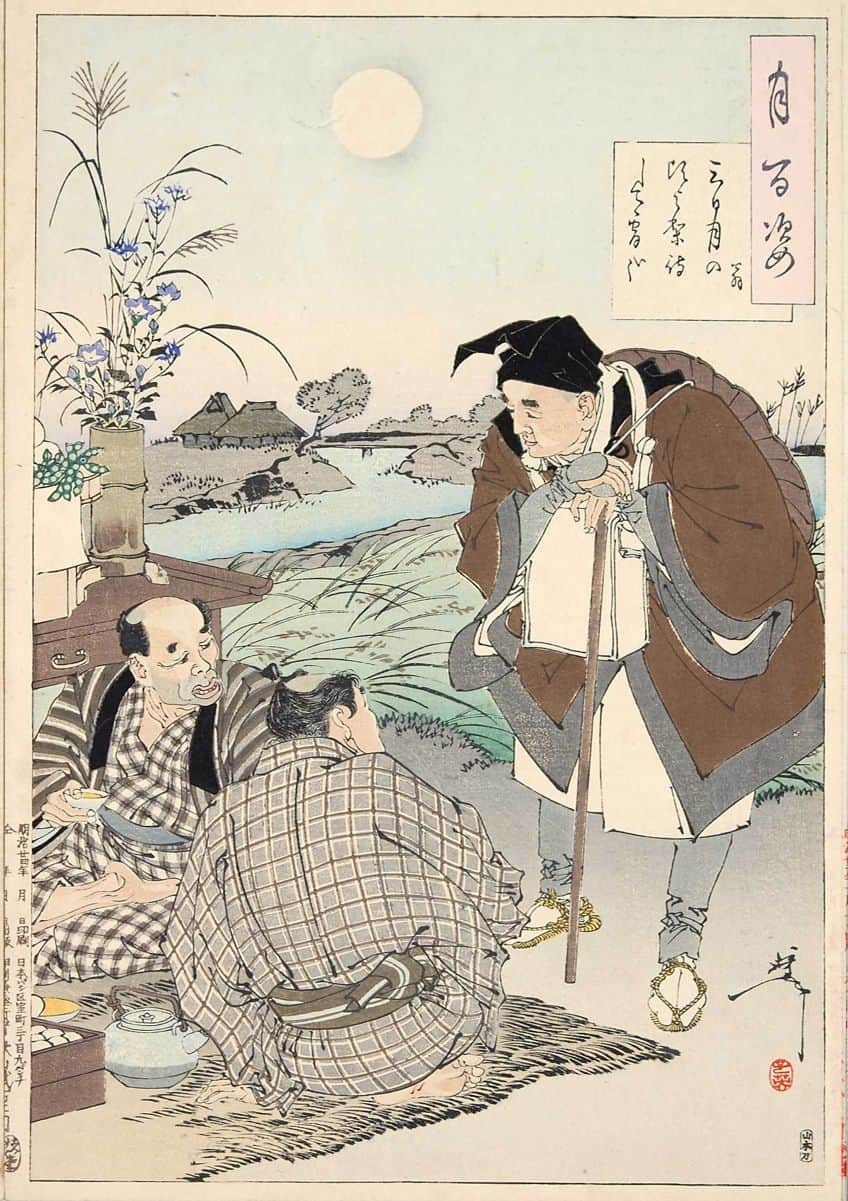
During the 19th century, haiku poetry began to spread outside of Japan, firstly to the Netherlands and later to France, and not long after that, to North America as well. In the early 20th century, poets like Ezra Pound (1885 to 1972) found haiku poetry to be very powerful and effective. His famous poem, In a Station of the Metro (1913), is regarded as one of the earlier American haiku poems. In the 1950s some of the best poets like R. H. Blyth started to offer Japanese haiku to English-speaking poets and readers.
Traditional Haiku and Modern Haiku
Many people are acquainted with traditional Japanese Haiku poems and are aware of the structure of the Japanese poem that contains three lines, with a syllable count of five in the first line, seven in the second line, and five in the third line. Today, there are still many people writing modern haiku poetry in English, or other languages that still insist that the syllable count of five-seven-five must remain with all their poems.
However, when writing modern-day haiku in another language, other than Japanese, the syllable count does not have to adhere to the traditional way of the five-seven-five structure, because syllables and words cannot be translated directly from another language into Japanese.
You do not even have to stick to a three-line structure, as many people write modern-day haiku in one or two lines. When writing traditional haiku, you do not capitalize your first word in a line, and you do not have to use any punctuation marks, because the lines of the poem do not complete a full sentence. The structure and style you choose to write in are completely up to you, and you can write what feels and sounds good to you. Remember, haiku is always revolving around nature, but there is also senryu, which is a form of haiku that revolves around emotion and behavior.
Examples of Haiku
Haiku has inspired poets to take note of their surroundings and become aware of ordinary moments that are meaningful. Nature has always been considered the perfect setting that can appeal to our mental state, where we can be completely content with ordinary simple things like a bird singing or the autumn leaves falling.
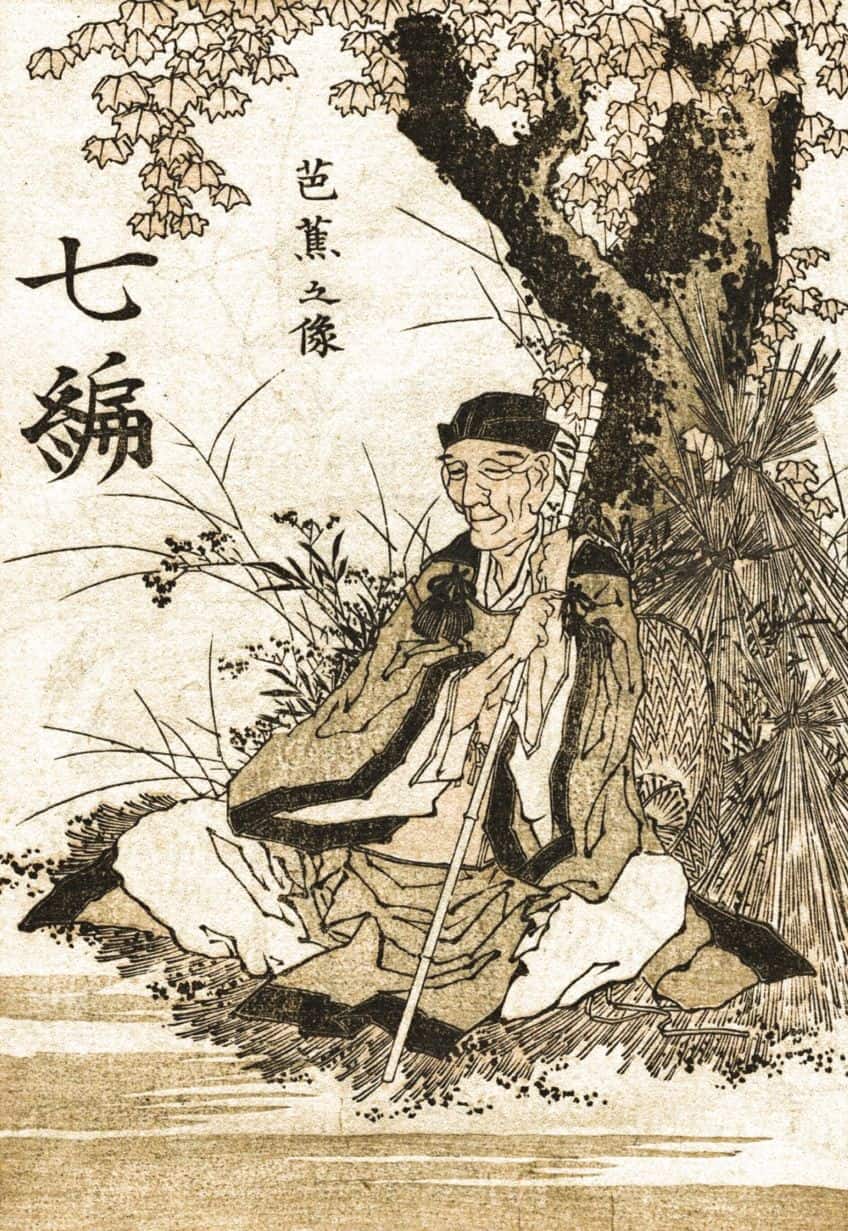
When writing in traditional Japanese haiku, nature is always the focal point. In these two examples below, we can see cherry blossoms speaking of the upcoming springtime, and the stars in the heavens painting a picture of a cool summer night.
Many haiku poets express some form of emotional response to things that they observe, which could be a simple thing like a laugh, or something a lot deeper, like a reflection on the nature of our existence.
From the following two examples, we will see how the poet expresses their feelings with just one image.
This poem was and is the image of a cuckoo, and upon hearing its sound, it arouses a deep yearning for the city, showing how one small image can stir up memories of the past. In the following example, the poet links insects, lovers, and the stars which can highlight a sense of separation and loss.
During the 20th century, many American and European poets started writing haiku poetry in different languages like French, Italian, and English, and they tried to capture some of their emotional states in just a few words.
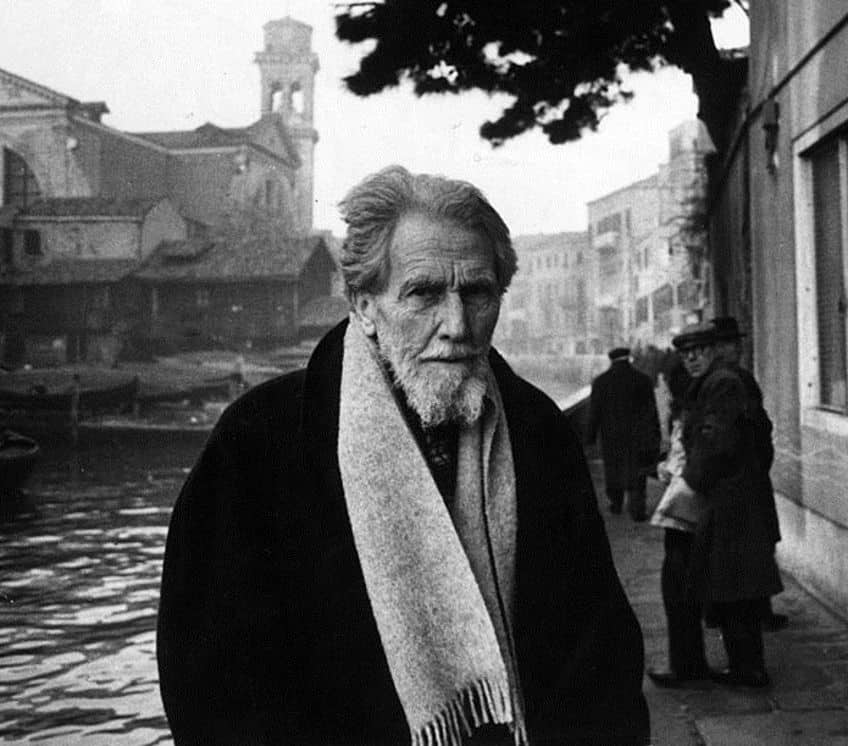
Some of these modern poets stayed with the traditional structure of haiku, with its five-seven-five syllables. However, many of them strayed from these traditional guidelines and structured their form of modern haiku poetry, see below.
How to Write a Haiku Poem
If you are interested in making an intense impact by just using a few words, then haiku poetry may be for you. However, writing haiku poetry can also be a little daunting, especially when you must write something so brief, and yet make it inspirational. Let us show you the basic process of creating haiku poetry.

What Are the Rules for Haiku?
Japanese haiku poetry has found popularity worldwide, and many poets firmly believe that the strict rules of haiku, if applied, can sharpen their writing skills. Haiku writing is also believed to be beneficial for writers involved in creative writing, or many other forms of literature that can include nonfiction as well as fiction. There is a basic structure or set of rules that need to be adhered to for most English language haiku poems.
- What verse form is used in haiku? The complete poem needs to contain only three lines, which will include 17 syllables in total.
- The first, as well as third lines, should consist of five syllables each .
- The second line should then have several syllables .
- The lines do not have to rhyme ; most never rhyme at all.
- Capitalization of letters and punctuation marks are at the poet’s discretion, and there are no rules to be followed to structure sentences.
- The poem can contain repetitive sounds or words .
- Traditional haiku poetry requires “kireji” (cutting words ) that are spoken words instead of symbols , and they have no logical definition or meaning.
- Traditional haiku poetry should also include “Kigo ” , which is a phrase or word that has reference to one of the four seasons.
Many poets believe that these strict rules of haiku need to be followed and never broken, and if you are a beginner in haiku poetry, you should stick to the rules as they will be a great help for you when you write these types of poems.
Consider Nature
Since the traditional Japanese haiku is all about nature, it may be a good idea to go for a walk in the park or the forest, as nature is an excellent environment where you can capture ideas. If you are unable to walk in the forest, then look at some photographs or a video, or even listen to some music of nature.
Now you need to meditate on what is going on around you and capture it in your mind in the present tense and focus on that moment, observing every single detail that you can remember.
It is also a big help to forget everything else and zoom in on a single experience. For example, looking beyond the forest and focusing on that one leaf floating to the ground. If you feel you do not want to write about nature, then there is “senryu”, which is another form of haiku, but its emphasis is more on humanity and involves emotions and behavior.
Write It Down
Wherever you go, you need to carry a notebook with you so you can jot down what you see, your dreams, and whatever thoughts pop up in your mind. Make sure you write everything down no matter how insignificant it may seem to you, even if they do not seem to relate to each other.

Describe the moments you experience using sensory words, which may be a list of words or one single phrase. Try to include all five senses or as many as you can. Also, try to stick to using short words when describing a falling leaf, like brown, dry or crunchy, and do not worry if they do not rhyme. Also, make use of “kigo” or seasonal words like the names of the seasons or the months of the year, and include words that relate to the weather, or words involving the light or the atmosphere, like cool, dusk, harvest, and so on.
Drafting Your Haiku Poem
When you start to write your haiku poem, choose two distinct images that you have collected, as this is the essence of a good haiku poem. The comparison or combination of these two images can reveal an enlightening and surprising relationship between them.
You need to include two images that can be anything that you have on your list, but they must remain distinct from each other. This could refer to the leaf falling to the ground as your first image, and the second image could be a gust of wind.
When writing your poem, you need to include a “kireji” or cutting word, which is a kind of punctuation in traditional haiku poetry and is often used to add emphasis or change of scene. It can be used at the end of the first as well as third lines to help highlight a certain contrast. It can also be used amid the second as well as third lines, indicating a change of scene.
However, there is no direct equivalent in the English language for these words, which makes it very difficult to write a proper haiku poem. Instead of using a “kireji” word you can just use a punctuation mark, emphasizing the contrast within your poem.

Try as much as possible to remain within the traditional Japanese structure of five-seven-five. Let us explain this by using the example of the falling leaf. In the first line, the leaf is still clinging to the branch of the tree; in the second line, a gust of wind causes it to fall, and in the third line, it can be something to do with the dying leaf. Now you can read your haiku poem out loud to hear how it sounds, then you can revise your poem, play around with the words, and see if you can improve on them. Lastly, you can share it with friends and family members.
From medieval Japanese poets, right down to modern-day writers, haiku poetry remains popular amongst poets and writers. As long as we have life and nature with us, there is an endless source of inspiration for us to draw from!
Frequently Asked Questions
What is a haiku poem .
A haiku poem is written when the writer has a sense of enlightenment or illumination and is normally written in three short lines of seventeen syllables. It is usually written in the present tense, with pauses at the end of each line, and does not have to rhyme.
What Verse Form Is Used in Haiku?
The traditional form is a Japanese poem in three lines and has a five-seven-five syllable structure. However, in these modern times and for all other languages, the structure is rather for sound counts than syllable counts.
Can You Use Punctuation Marks When Writing Haiku?
When writing modern-day haiku, punctuation marks and capitalization can be used. This will help the flow of the poem, and the inclusion of either of these is entirely up to the writer.

Jaycene-Fay Ravenscroft is a writer, poet, and creative living in South Africa with over 6 years of experience working in a contemporary art gallery. She completed her Bachelor of Arts degree, majoring in Art History and Ancient History at the University of South Africa, with additional subjects in Archaeology and Anthropology.
With a passion for learning, Jaycene-Fay is very much inspired by symbology and the connection between everything in this world. Trained to analyze and ‘critique’ art, she is passionate about exploring the meaning behind each artwork she encounters and understanding how it connects to the artist’s cultural, historical, and social background. Writing is Jaycene-Fay’s way of having a finger in every pie: to research, share knowledge, and express herself creatively.
Learn more about Jaycene-Fay Ravenscroft and the Art in Context Team .
Cite this Article
Jaycene-Fay, Ravenscroft, “What Is a Haiku? – The Art of Writing Japanese Haiku Poetry.” Art in Context. March 7, 2023. URL: https://artincontext.org/what-is-a-haiku/
Ravenscroft, J. (2023, 7 March). What Is a Haiku? – The Art of Writing Japanese Haiku Poetry. Art in Context. https://artincontext.org/what-is-a-haiku/
Ravenscroft, Jaycene-Fay. “What Is a Haiku? – The Art of Writing Japanese Haiku Poetry.” Art in Context , March 7, 2023. https://artincontext.org/what-is-a-haiku/ .
Similar Posts
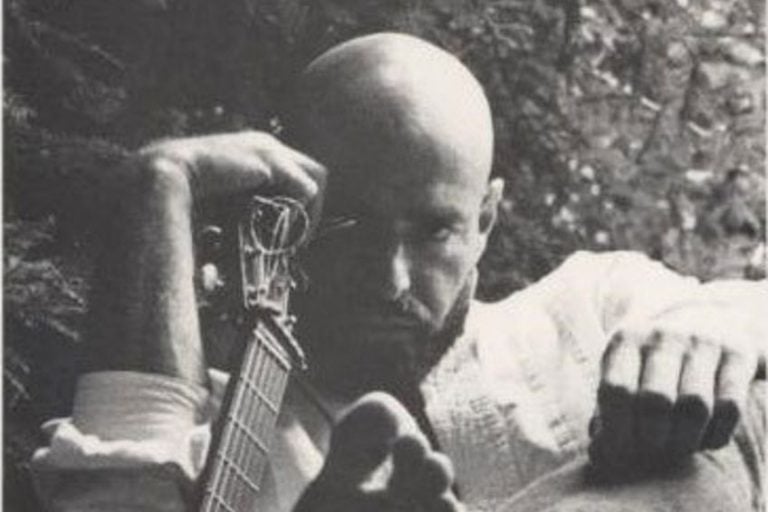
Shel Silverstein Poems – Explore His 10 Most Famous Works

Beat Poetry – Non-Conformity in the World of Poems

Friendship Poems – Celebrating Companionship Through Prose
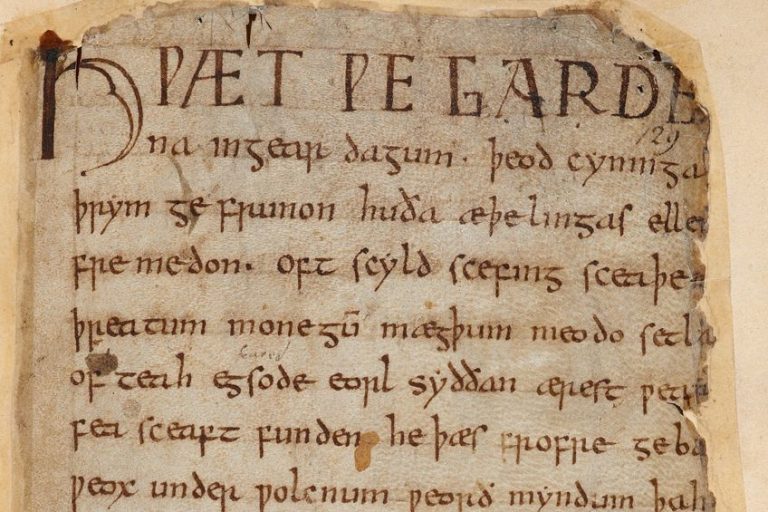
Epic Poetry – The Art of Storytelling Through Prose
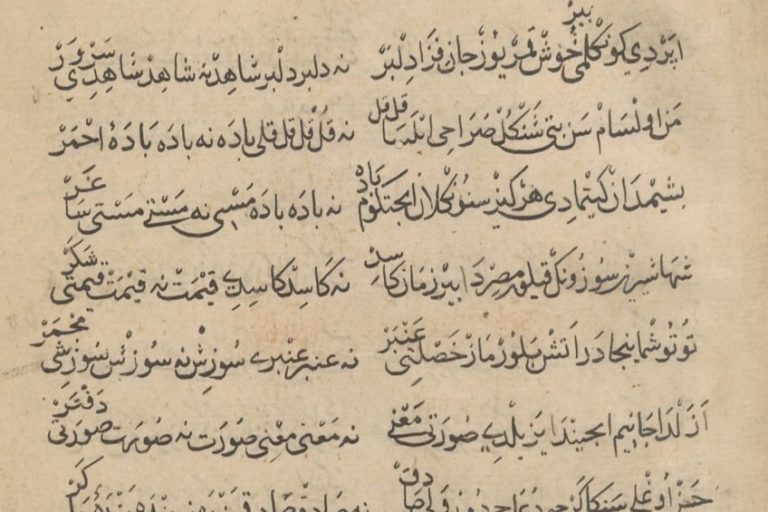
Ghazal Poetry – Explore This Unique Arabic Poetic Form
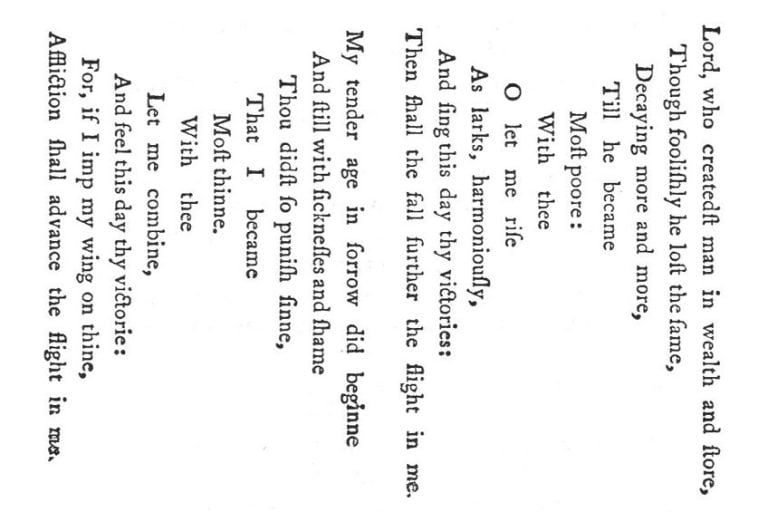
Concrete Poetry – Creating Meaning Through the Shape of Words
Leave a reply cancel reply.
Your email address will not be published. Required fields are marked *
Save my name, email, and website in this browser for the next time I comment.

- What is a Haiku? Japan’s Beloved Poetry haiku Definition & Format Explained.
- Self Publishing Guide
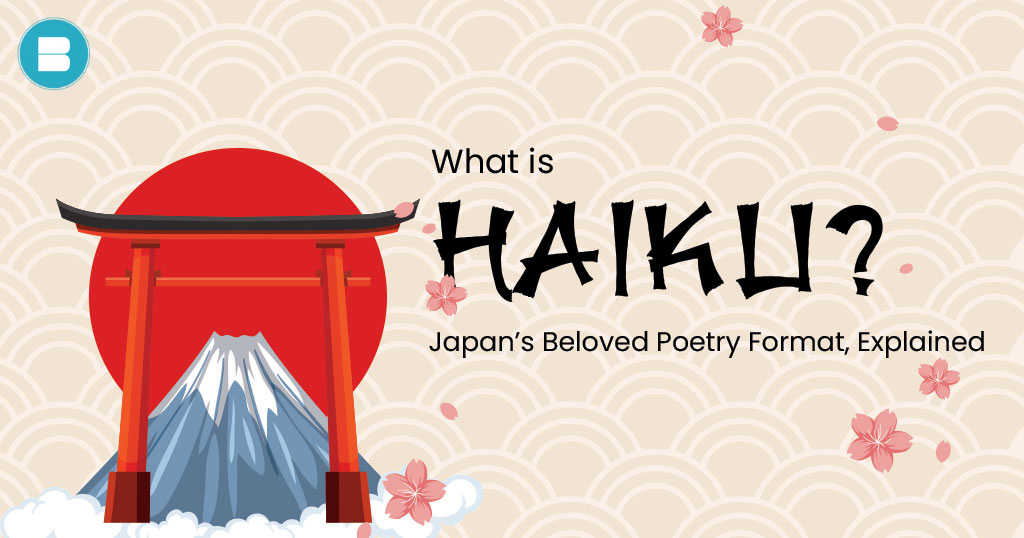
Japanese traditional poetry known as haiku has three lines. It usually has 17 syllables, which are placed in a 5-7-5 rhythm. There are a certain number of syllables in each line, with the first line having five, the second having seven, and the third having five once again.
Read: Learn how to write a book and get it easily published in the UK.
A transitory moment in nature is frequently captured in a haiku, emphasising its beauty or importance. Using succinct and evocative language, it seeks to elicit an emotional response or produce a vivid image in the reader’s mind. A kigo, or term that denotes the season or time of year in which the poem is situated, is frequently used in traditional haiku.
How did the concept of haiku start?
In the seventeenth century, Japan is where the idea of the haiku first appeared. It developed from a previous literary form called hokku, which was the first stanza of a group-written linked-verse style known as renga. Renga was a well-liked type of poetry in which several poets would write poems in turn, frequently as part of a social gathering.
Over time, poets started to place increasing emphasis on the hokku as a distinct literary form, highlighting its capacity to depict a particular moment or a feature of nature. Renowned Japanese poet Matsuo Bash, who is sometimes referred to as the master of haiku, raised the hokku to a greater prominence.
The hokku later became known as the haiku as it became more and more popular as a standalone form. The poet Masaoka Shiki first used the term “haiku,” which originally meant “playful verse,” in the late 19th century. Shiki made a significant contribution to the growth and development of haiku as a literary art form.
As Westerners were exposed to translations and adaptations of Japanese haiku, haiku began to achieve fame on a global scale in the 20th century. Haiku became a well-known form of poetry all over the world as a result of its concision and emphasis on nature connecting with writers from many cultures.
Haiku is still honoured and used today all over the world, with writers examining its essence and attempting variants while still keeping to its basic rules.
Who came up with the concept of Haiku?
During the 17th century, the idea of haiku as a unique poetry form first appeared in Japan. Hokku was the precursor of haiku, which developed from it, although Matsuo Bash (1644–1694) is credited for popularising and perfecting haiku as a literary art form.
Bash, a well-known Japanese poet, is frequently referred to as the inventor of the haiku. He highlighted the significance of accurately and succinctly portraying a particular instant or natural feature. Basho’s haiku poems demonstrated a strong love of the natural environment and frequently included a kigo, which is a word or phrase that denotes the season.
His significant works laid the groundwork for the growth of the haiku form and demonstrated his mastery of the genre, such as “Narrow Road to the Interior” (Oku no Hosomichi). Bash influenced succeeding generations of poets to delve deeper into and improve on haiku through his works and lessons.
It’s crucial to remember that while Bash had a significant role in popularising haiku and influencing its aesthetics, the idea of brief, nature-focused poetry was present in older Japanese literature. Over time, numerous poets and authors contributed to the development of hokku into haiku. Basho became a key player in the development of haiku because of his influence and commitment to the form.
Famous Haiku poets (From 17th to 20th Century) –
- Matsuo Basho Haiku (1644-1694)
- Yosa Buson (1716-1783)
- Issa, who lived from (1763-1828)
- Masaoka Shiki, who lived from (1867 – 1902)
- Santoka Taneda, who lived from (1882-1940)
Matsuo Basho Haiku
Matsuo Basho Haiku (1644–1694) was brought to a greater position in Japan during the 17th century by Bash, who is widely regarded as the genre’s master. His writings, such “ Narrow Road to the Interior ” (Oku no Hosomichi), placed a strong emphasis on the use of straightforward language to portray the essence of nature and transitory moments.
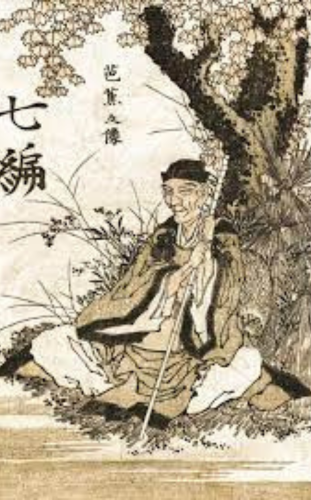
Yosa Buson (1716–1783) was a well-known Japanese haiku poet during the Edo era. He was renowned for his sophisticated and moving poetry, which frequently included striking imagery. Buson’s works revealed a profound respect for the natural world, the arts, and human emotions.
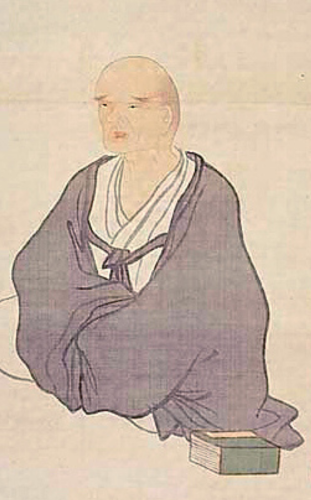
Matsuo Basho Issa
Issa, a haiku poet who lived from 1763 to 1828, was renowned for his tenderness and sensitivity. His haiku frequently demonstrated both a sharp sense of the natural world and a profound concern for human suffering. The joys and pains of life were both covered in Issa’s works.
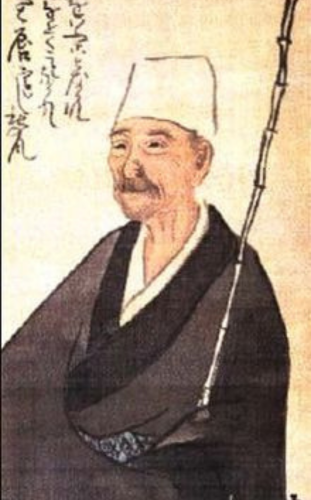
Masaoka Shiki
Matsuo Basho Haiku (1644–1694) was brought to a greater position in Japan during the 17th century by Bash, who is widely regarded as the genre’s master. His writings, such “Narrow Road to the Interior ” (Oku no Hosomichi), placed a strong emphasis on the use of straightforward language to portray the essence of nature and transitory moments.
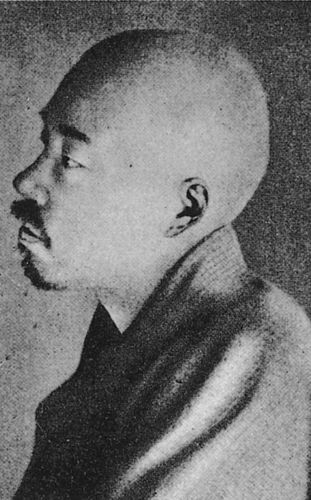
Santoka Taneda
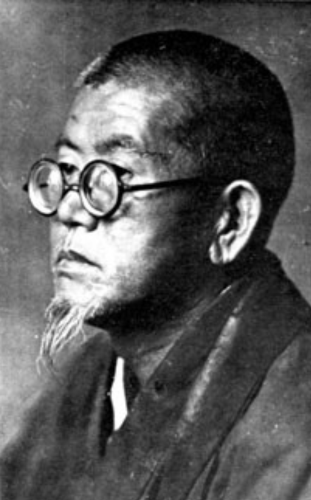
These are only a few instances of well-known haiku poets; there are many more illustrious people who have helped haiku evolve and gain recognition both in Japan and abroad. The variety of haiku poetry is enriched by the individual styles, viewpoints, and creative expressions that each poet contributes to the genre.
Famous Haiku poets from contemporary times (20th Century onwards)
Let’s look at some contemporary haiku writers now that we’ve learned more about the historical haiku poets.
Jack Kerouac
Richard wright.
- Allard, Matsuo
Janice M. Bostok
Billy collins, jane reichhold.
Jack Kerouac, who wrote novels during the Beat Generation and died in 1969, also tried his hand at haiku. His haiku poetry frequently displays his free-flowing, stream-of-consciousness writing style, fusing Zen philosophy with vivid imagery.

Richard Wright, an important African-American author, lived from 1908 to 1960. Wright is renowned for his potent haiku poetry. His haiku frequently tackle topics of racial and social injustice in addition to the wonders of nature.
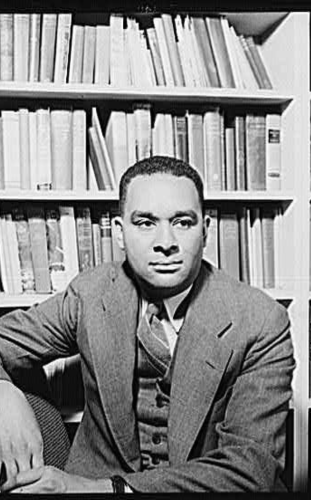
Matsuo Allard
Allard, Matsuo (1931–2019): Matsuo Allard, a French-born haiku poet, had a significant role in popularising haiku throughout the French-speaking world. He devoted his life to creating and interpreting haiku, hoping to convey feelings and the spirit of nature via his poetry.
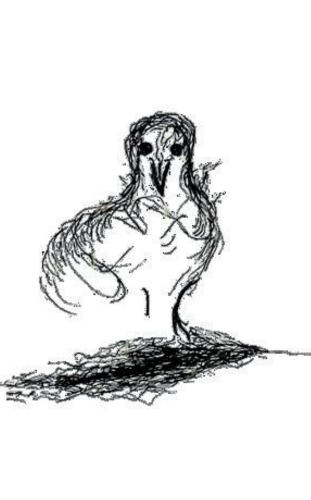
(1942–2011) Janice M. Bostok Bostok, an Australian haiku poet, made a significant contribution to the growth of the form in English. Her art frequently incorporates aspects of Australian scenery with Japanese aesthetics, displaying an original cross-cultural viewpoint.
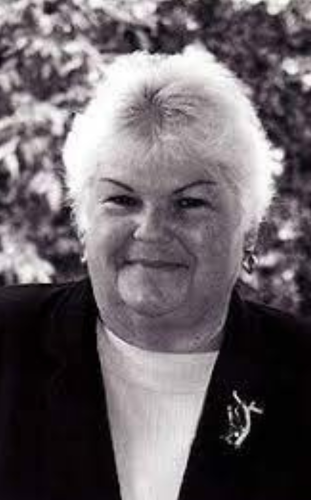
Billy Collins, a famous American poet best known for his poetry, was born in 1941. He has also dabbled with haiku. His haiku-like lines, which explore commonplace events and observations, frequently display his distinct wit and humour.

Jane Reichhold, who died in 2016, American haiku poet and editor Reichhold was instrumental in popularising haiku in English.

Is the haiku form still well-known today?
Yes, the haiku form is still well-known and widely used today. Haiku is a form of poetry that originated in Japan but has since garnered popularity and reputation around the world. There are vibrant groups of haiku poets and aficionados all over the world, and it is extensively used and loved in many nations.
Haiku is a deeply embedded part of Japanese culture that is both studied and honoured. There are still several haiku-specific literary events, publications, and competitions. Numerous Japanese people still read and write haiku as a means to engage with nature, think back on their experiences, and succinctly communicate their feelings.
Read: What is contemporary literature? Learn what are the latest trends in literature.
Haiku has garnered a sizable popularity outside of Japan. There are several haiku associations, organisations, and internet communities worldwide. Poets may share their work, get criticism, and participate in conversations about haiku methods and aesthetics in these groups.
Haiku has also affected and been incorporated into modern poetry in a variety of languages. Poets from all over the world experiment with the format, customise it for their cultural settings, and use haiku aspects in their writing. People looking for succinct and introspective forms of expression find that the haiku’s brevity, emphasis on nature, and capacity to capture a moment in time appeal to them.
The simplicity of haiku and its ability to conjure up vivid pictures and feelings in only a few lines have led to its continuing appeal. As a consequence, a wide variety of people, including professional poets, amateur writers, and those looking for a conscious and creative outlet, continue to love and practice haiku.
How does one master the haiku form?
Haiku writing involves experience, observation, and a grasp of the fundamentals of haiku, just like writing any other kind of poetry. Here are some pointers to help you become a better haiku writer:
- Examine the form : Make sure you are familiar with the haiku form and features. Recognize the 5-7-5 syllable pattern, which places a premium on conciseness, simplification, and the use of concrete imagery.
- Observe your surroundings and the natural world : Haiku frequently emphasises nature and the transitory moments of life. Develop a careful awareness of your environment and make an effort to record specific information and sensory impressions. Pay attention to seasonal variations, little actions, and how everything in nature is related.
- Exercise awareness by composing haiku ; it’s a relaxing activity. Practice mindfulness to increase your level of present-moment awareness. This might assist you in noticing and appreciating the little elements that contribute to compelling haiku.
- Accept simplicity : Haiku relies on an economy of words and simplicity. Condense your observations into clear, vivid sentences. Try to convey yourself clearly and without extraneous words.
- Use sensory language : Haiku is known for its capacity to elicit strong language. Include sensory information and produce visuals that appeal to the reader’s senses. With your words, try to conjure up an image in the reader’s head.
- Edit and rewrite : When writing a powerful haiku, it’s common to need to go back and edit and modify your first drafts. Remove superfluous words from your poetry, try out alternative line breaks, and work on the language and images.
- Get opinions and join groups : Participate in haiku workshops or online forums, and exchange your haiku with other poets. You may improve your abilities and gain insightful criticism from other authors.
Remember, mastery of haiku takes time and practice. Embrace the journey of exploration and experimentation, and allow yourself to grow as a haiku poet. With dedication and persistence, you can develop your own unique voice and create compelling haiku.
Read: Here’s a list of 7 Best Time Management Books to Read on Kindle Unlimited.
In conclusion, haiku is a popular form of traditional Japanese poetry that continues to captivate readers and writers all over the world. Its succinct structure, emphasis on nature, and ability to elicit feelings and imagery in a few lines make it a powerful and lasting art form. Exploring the beauty and spirit of haiku may be a wonderful and enriching experience, whether you are an aspiring haiku writer or a poetry enthusiast.
- About The Author
- Latest Posts
You May Also Like

Leave a Reply Cancel reply
Your email address will not be published. Required fields are marked *
Save my name, email, and website in this browser for the next time I comment.

IMAGES
VIDEO
COMMENTS
haiku, unrhymed poetic form consisting of 17 syllables arranged in three lines of 5, 7, and 5 syllables respectively. The haiku first emerged in Japanese literature during the 17th century, as a terse reaction to elaborate poetic traditions, though it did not become known by the name haiku until the 19th century.. The term haiku is derived from the first element of the word haikai (a humorous ...
Haiku is a Japanese form of poetry that consists of short, unrhymed lines. These lines can take various forms of brief verses. However, the most common structure of haiku features three lines of five, seven, and five syllables, respectively. A haiku poem generally presents a single and concentrated image or emotion.
What is a Haiku? A haiku is a specific type of Japanese poem which has 17 syllables divided into three lines of 5, 7, and 5 syllables. Haikus or haiku are typically written on the subject of nature. The word haiku (pronounced hahy -koo) is derived from the Japanese word hokku meaning "starting verse.". II.
Haiku Definition. The haiku (hi-COO) is a form of Japanese poetry that originated in the 17th century. The haiku consists of three lines and has a syllabic count of 17. The word haiku was first used in English in 1902. The meaning is as the same in English as it is in Japanese. Haiku is both singular and plural, meaning you can read one haiku ...
Haiku by Matsuo Bashō reading "Quietly, quietly, / yellow mountain roses fall - / sound of the rapids". Haiku (俳句, listen ⓘ) is a type of short form poetry that originated in Japan.Traditional Japanese haiku consist of three phrases composed of 17 phonetic units (called on in Japanese, which are similar to syllables) in a 5, 7, 5 pattern; that include a kireji, or "cutting word"; and ...
Japan's Beloved Poetry Format, Explained. A haiku is a traditional Japanese poem that captures emotional responses evoked by nature. The most common haiku format is a three-line poem with a 5-7-5 syllable structure and no rhyme requirements. With its simplicity and concision, haiku poetry has endured the test of time, crossed language and ...
The common perception, or understanding, of haiku might be summarised as follows: 'The haiku is a short Japanese poem containing 17 syllables, following a tradition, and a name, that remains unchanged after centuries.'. There are, however, several problems with such a definition of the haiku, which this short introduction aims to address ...
A haiku is a three-line poem consisting of 17 syllables arranged as a five-syllable line, followed by a seven-syllable line, concluded with another five-syllable line. Haiku's are language dependent as the number of syllables in each line can change when translated. In Japanese, rather than syllables, words are broken into "on" which are ...
A haiku is a short poetic form from Japan characterized by juxtaposition, seasonal imagery, and number of on, which are similar to syllables. The form has been adopted into other languages with a focus on the number of syllables; in English, haiku is a three-line poem with phrases of five, seven, and five syllables, respectively.
Haiku (or hokku) A Japanese verse form most often composed, in English versions, of three unrhymed lines of five, seven, and five syllables. A haiku often features an image, or a pair of images, meant to depict the essence of a specific moment in time. Not popularized in Western literature until the early 1900s, the form originates from the ...
Haiku began in thirteenth-century Japan as the opening phrase of renga, an oral poem, generally a hundred stanzas long, which was also composed syllabically. The much shorter haiku broke away from renga in the sixteenth century and was mastered a century later by Matsuo Basho, who wrote this classic haiku: An old pond! the sound of water.
What is a "haiku"? The structure in Japanese and in English. The format of Japanese. 5-7-5 syllables ( 17 syllables in all) Must use a seasonally word (phrase), " kigo " (read below). The strucure of haiku is basically 5-7-5, 15 syllables. It is a poem that place value on the rhythm of sound, so it is better to keep 5-7-5 as possible.
Haiku is a style of poetry originating in Japan in which short poems about nature follow a syllabic structure of 5-7-5. Although modern haiku has deviated some from the traditional haiku syllable count, haikus continue to uphold themes such as nature, moments in time, and juxtaposed subjects. Define haikus with examples in literature.
Define haiku: To review, haikus are structured poems. These poems are unrhymed and consist of three lines with a total of seventeen syllables. The lines follow the pattern of five, seven, and then five syllables. Haikus take place in present tense and reveal an image of sudden awareness that often connects humans to their natural surroundings.
Traditional haiku usually focuses on two very simple subjects while providing an interesting or unexpected perspective. Like a good joke, the first part can serve as the set-up, while the second part delivers the punchline. Here is a classic example of haiku poetry from master Murakami Kijo (1865 - 1938): First autumn morning:
Haiku writing is also believed to be beneficial for writers involved in creative writing, or many other forms of literature that can include nonfiction as well as fiction. There is a basic structure or set of rules that need to be adhered to for most English language haiku poems.
Some of the many haiku poets inspired by Matsuo Bashō. The kireji is used to create a sense of juxtaposition or surprise, allowing the reader to experience a sudden shift in perspective or emotion. Good examples of this kind of haiku include: ' The old pond ' by Matsuo Bashō. ' A poppy blooms ' by Katsushika Hokusai.
Haiku is a form of traditional Japanese poetry, renowned for its simple yet hard-hitting style. They often take inspiration from nature and capture brief moments in time via effective imagery. ... Born in Tokyo in 1865, Murakami Kijo helped with the founding of Hototogisu, a literary magazine responsible for popularizing the modern haiku in ...
The origins of Haiku can be traced back to the tanka poetry of the Heian period (794-1185), a form of Japanese poetry that consists of 31 syllables arranged in a 5-7-5-7-7 pattern. The tanka was a popular form of poetry in Japan for centuries and was used to express a wide range of emotions, from love and desire to grief and longing.
Haiku poetry gained popularity in Japan during the Edo period (1603-1868) and became a prominent form of Japanese literature. Today, Haiku poetry is practiced around the world, and many poets have contributed to its evolution and popularity. Some of the most famous Haiku poets include Basho, Issa, Buson, and Shiki, whose works continue to ...
Haiku is a deeply embedded part of Japanese culture that is both studied and honoured. There are still several haiku-specific literary events, publications, and competitions. Numerous Japanese people still read and write haiku as a means to engage with nature, think back on their experiences, and succinctly communicate their feelings.